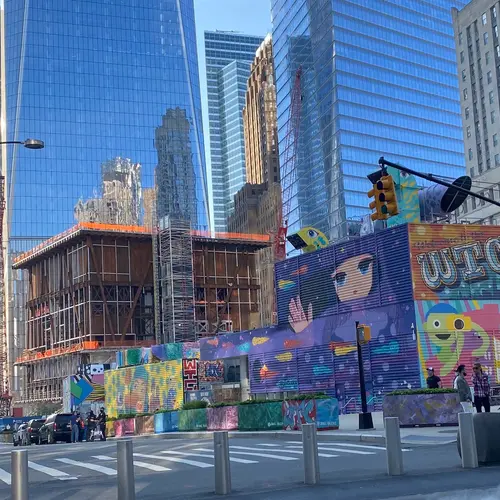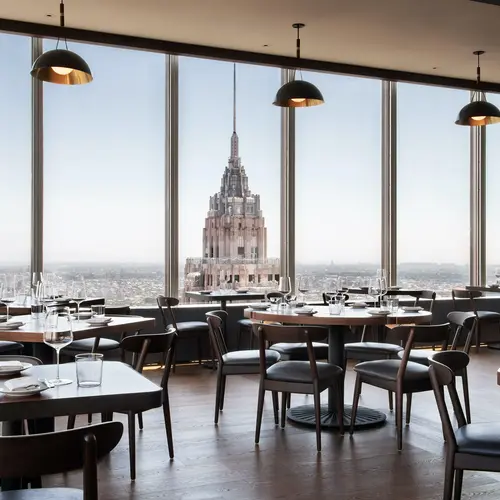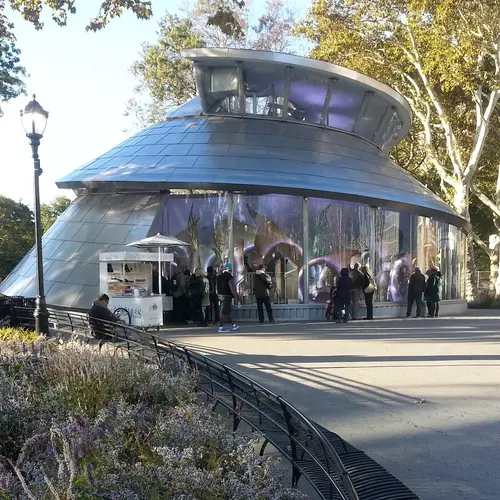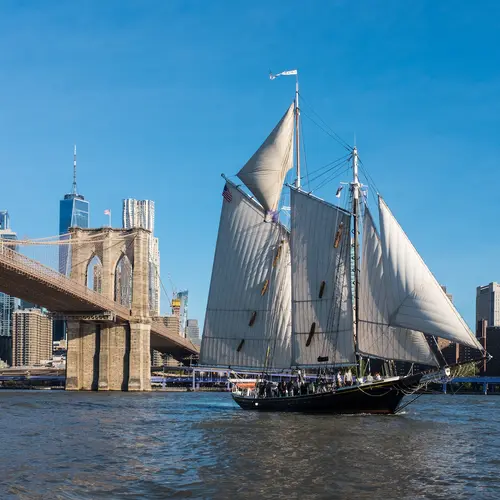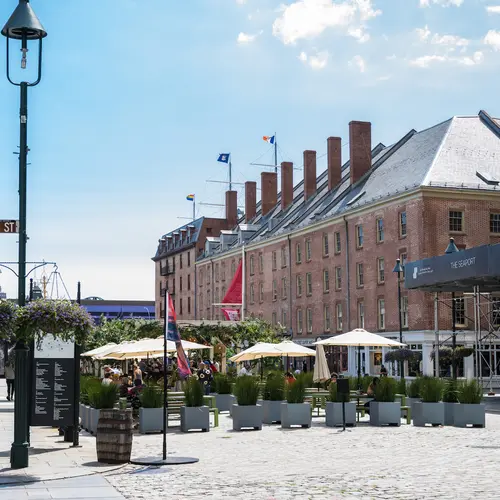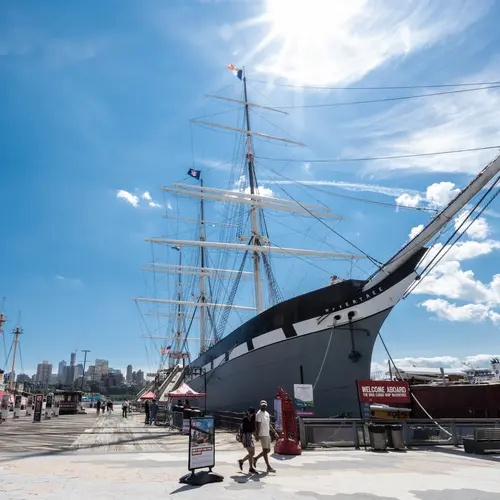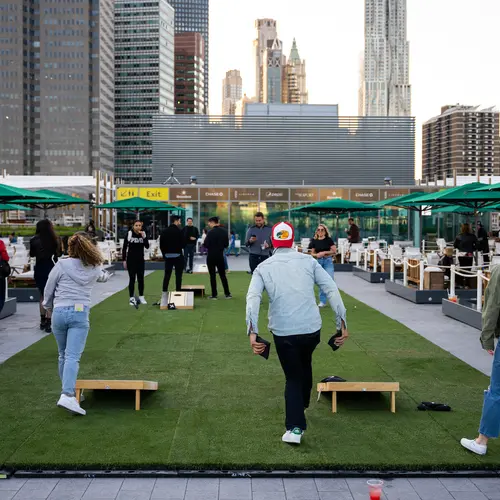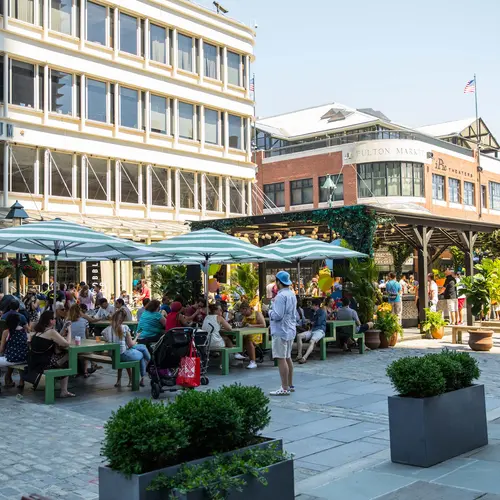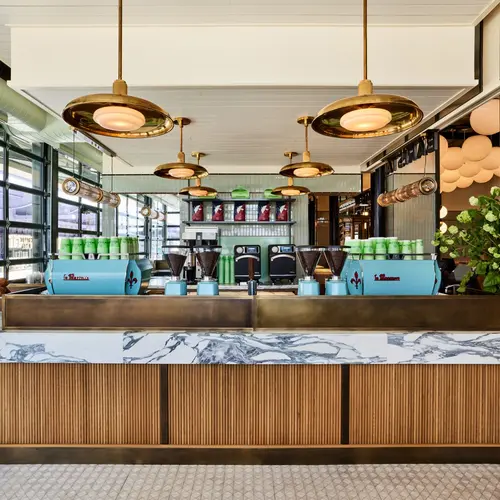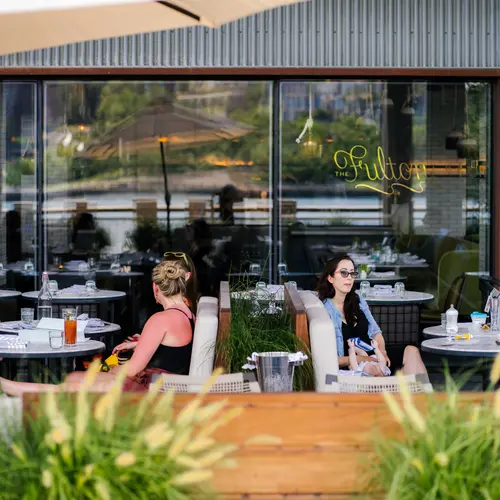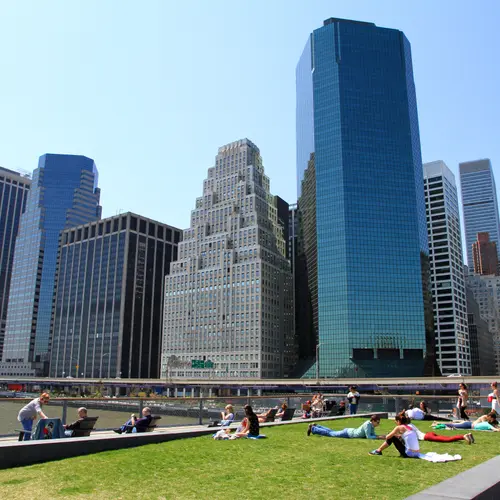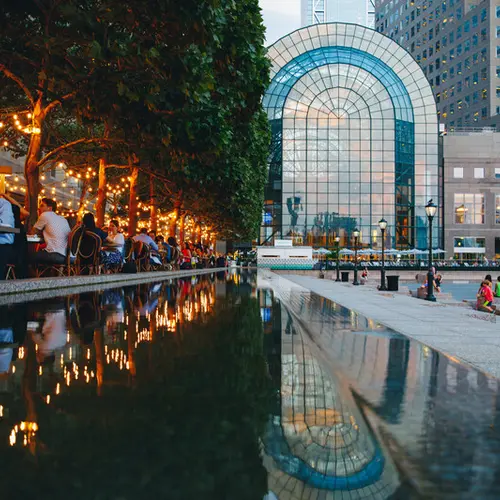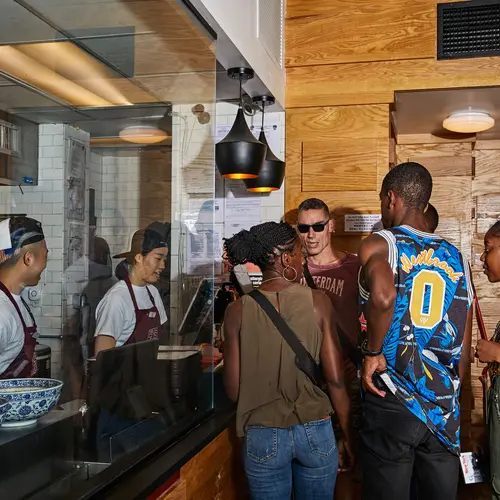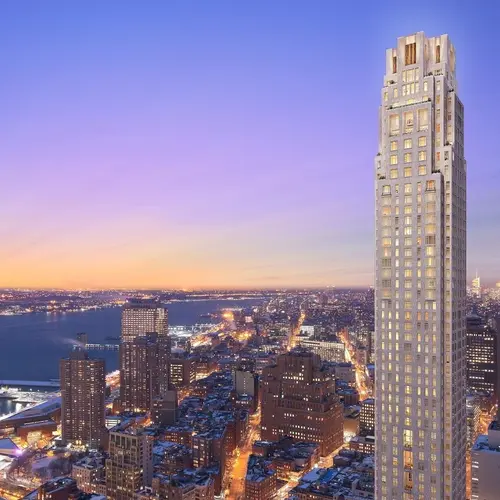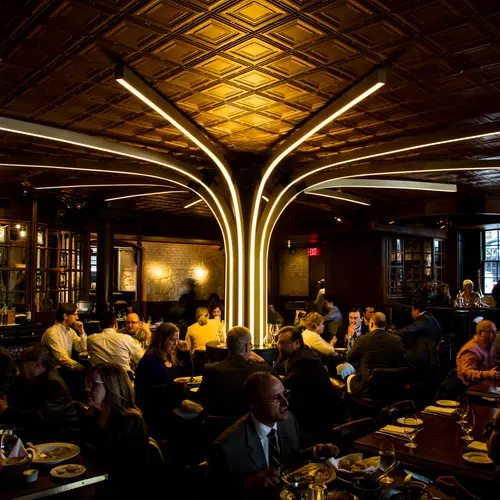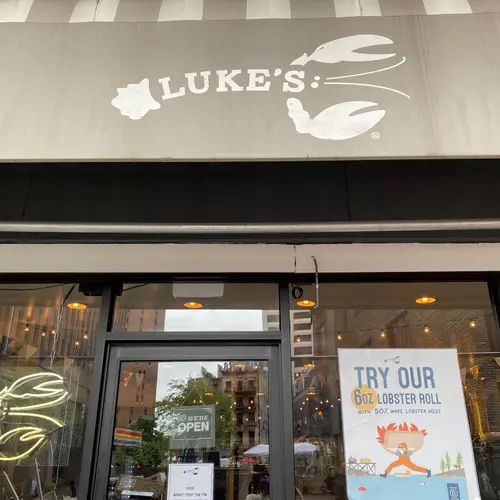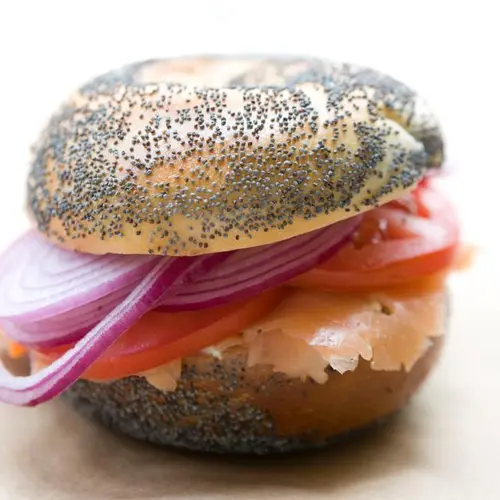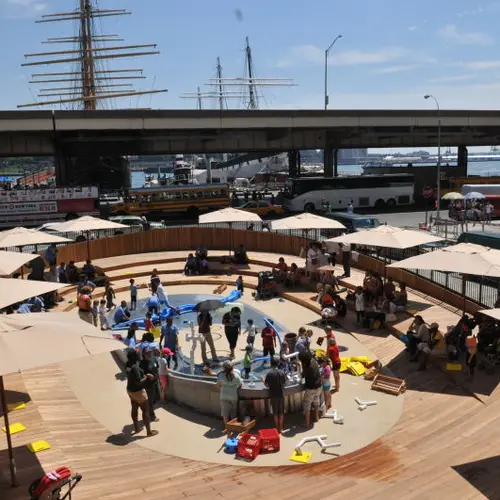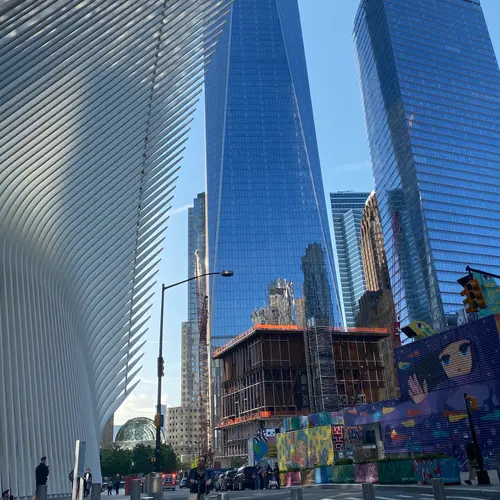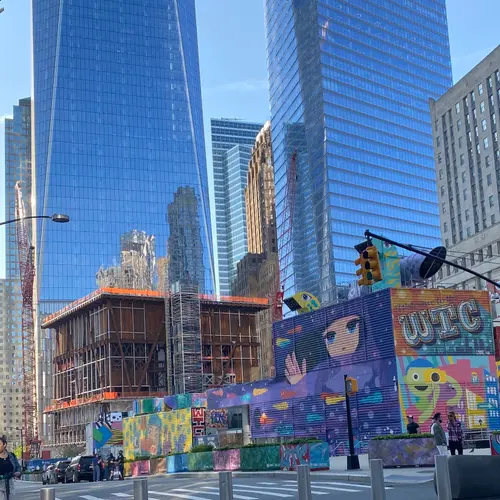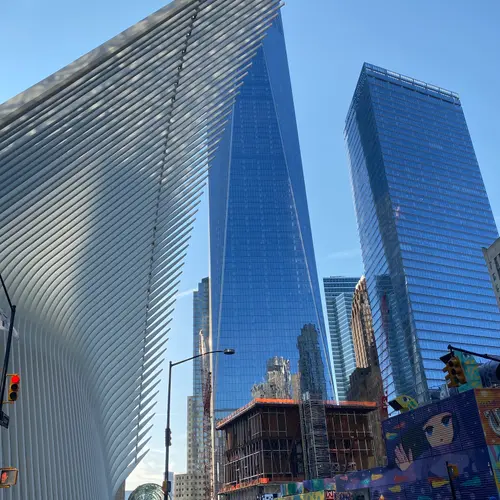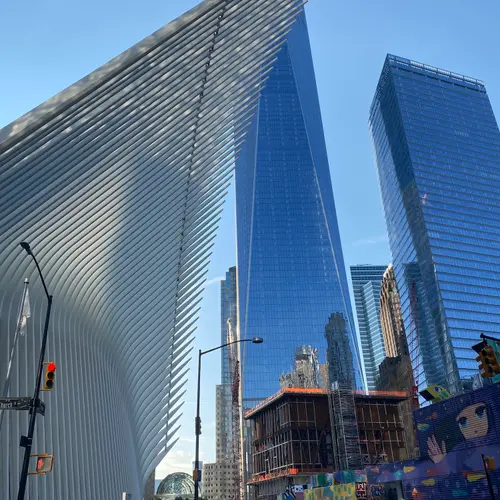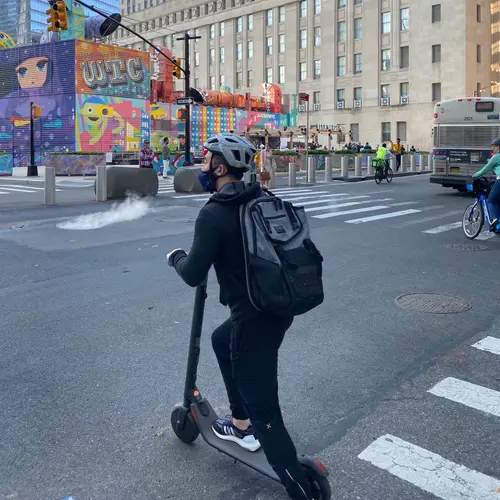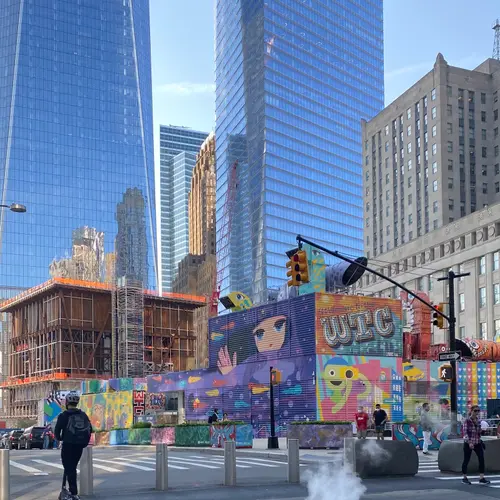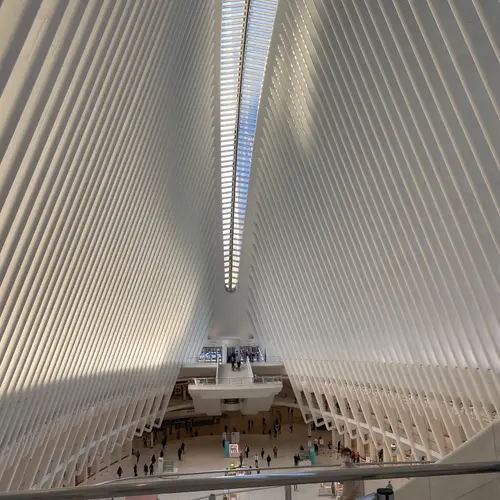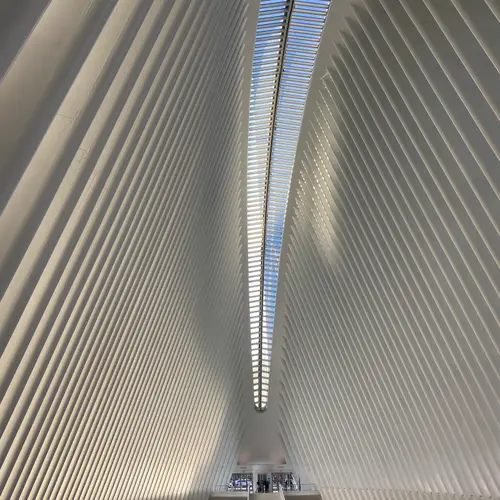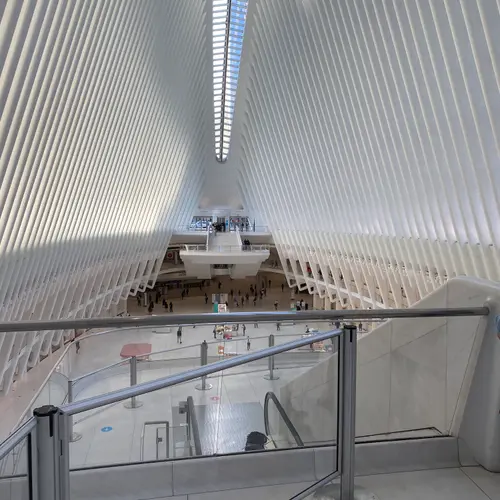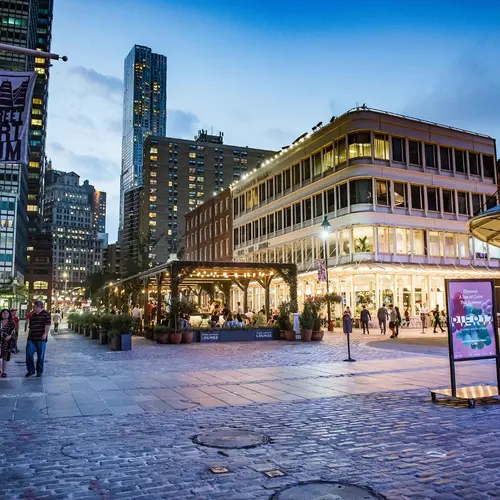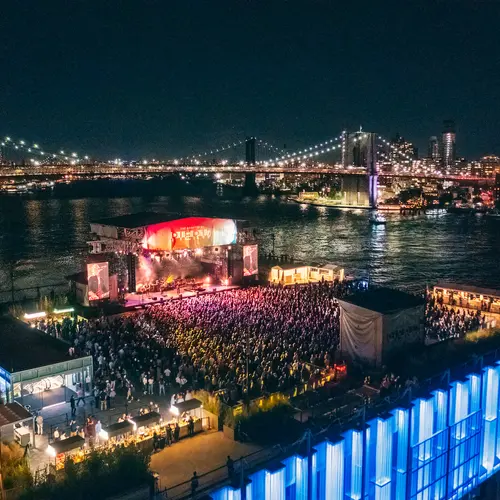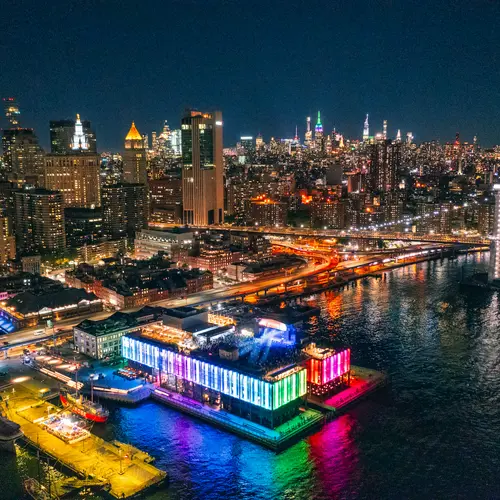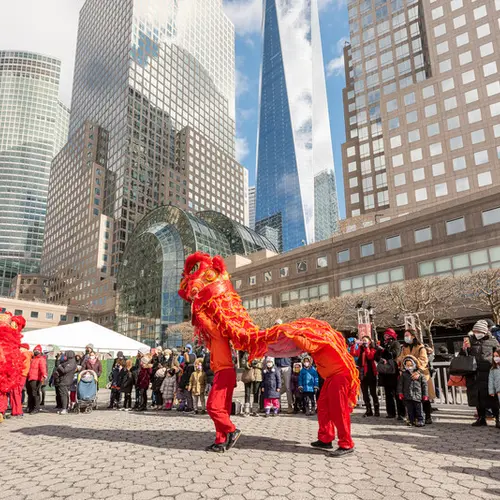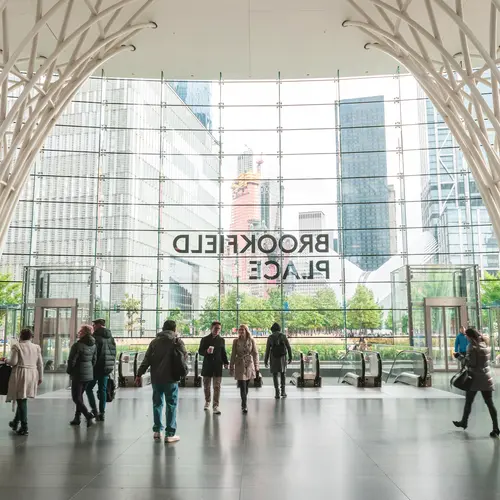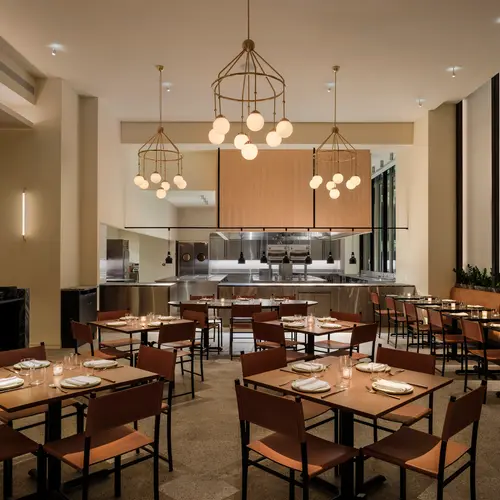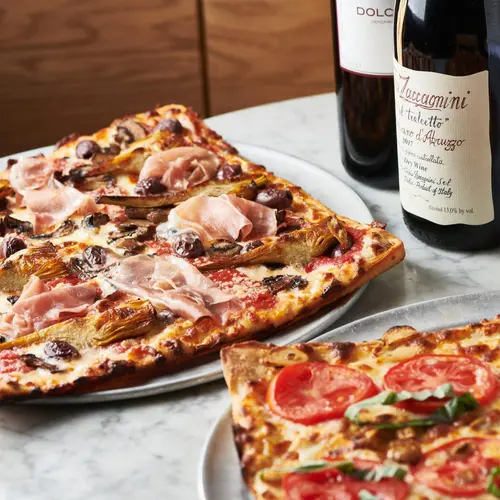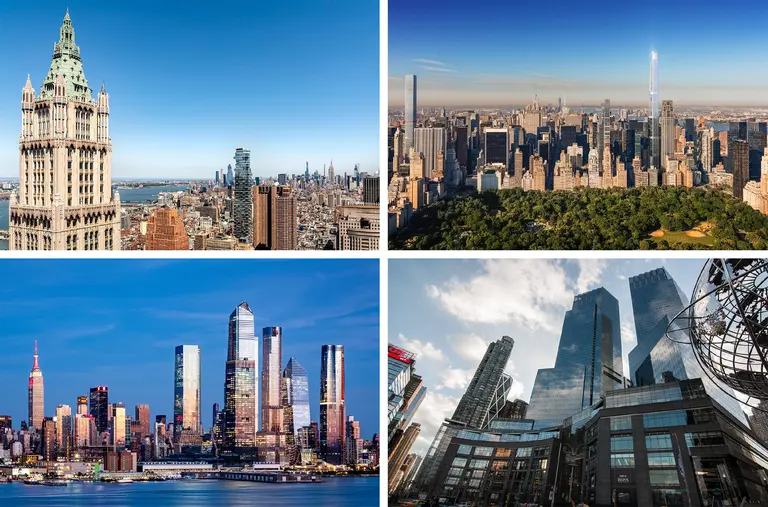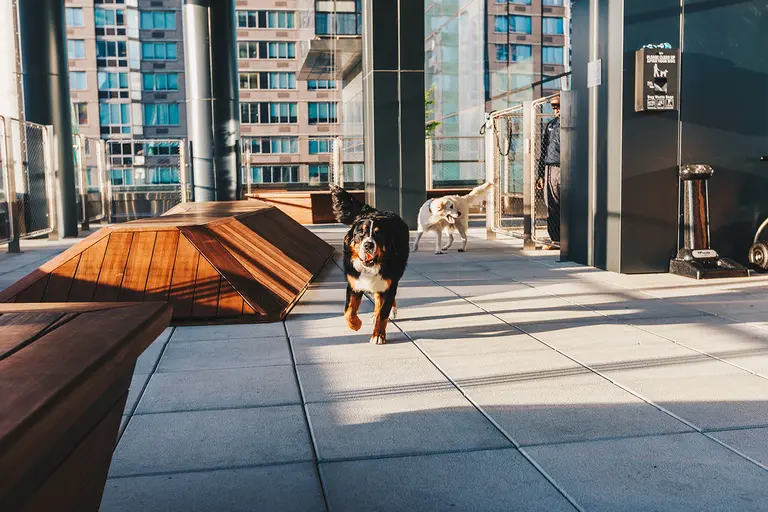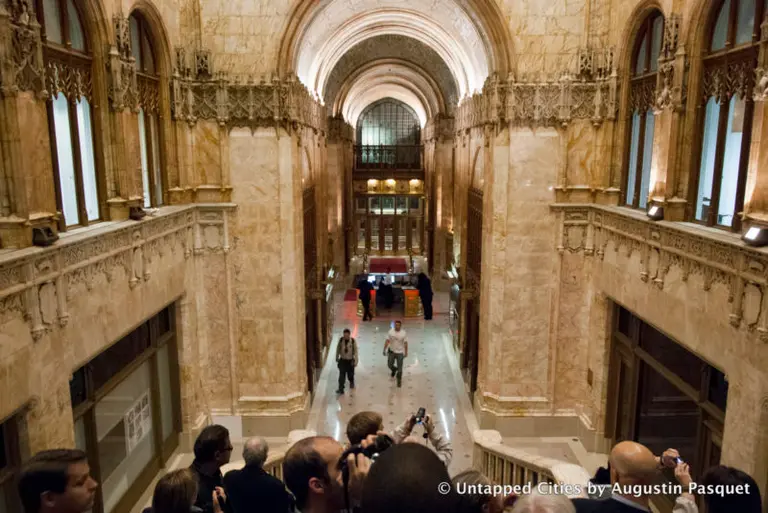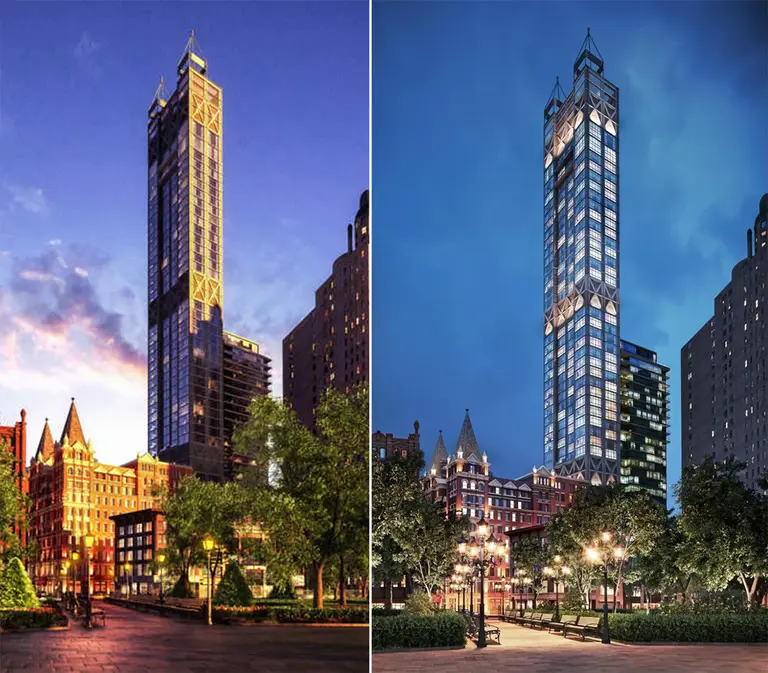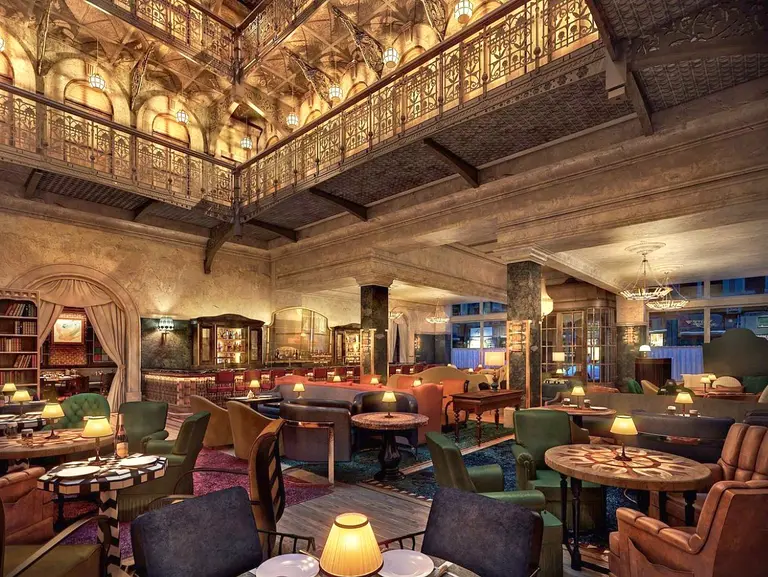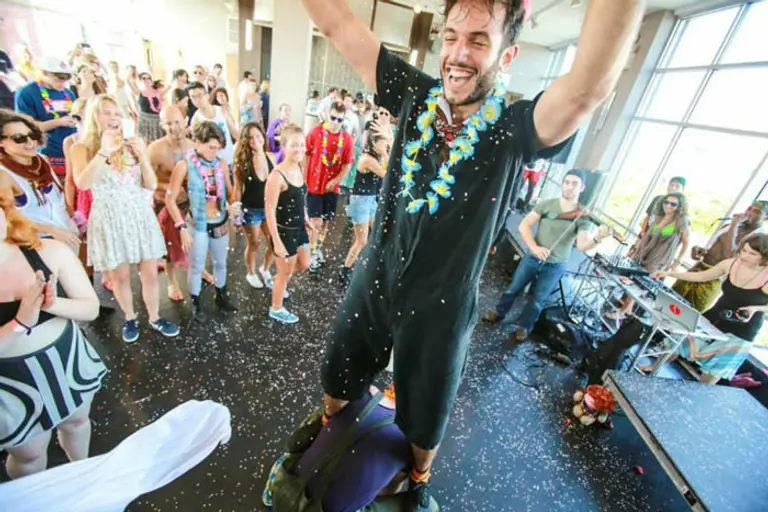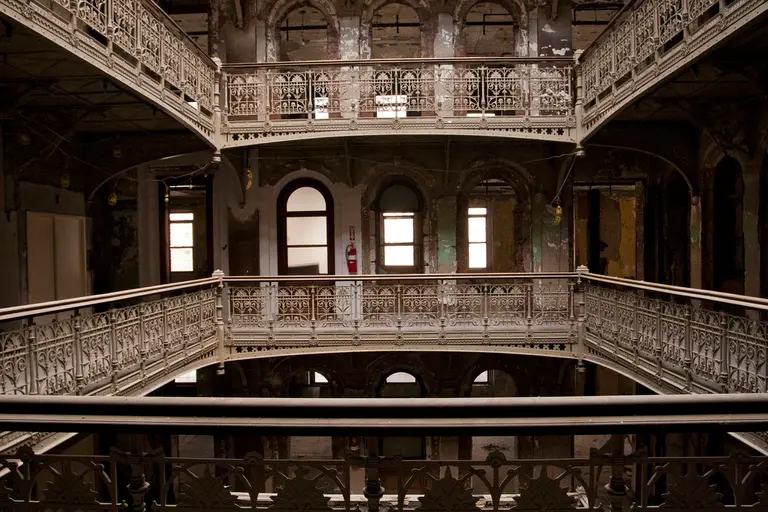Your guide to the Financial District, NYC’s oldest new downtown neighborhood
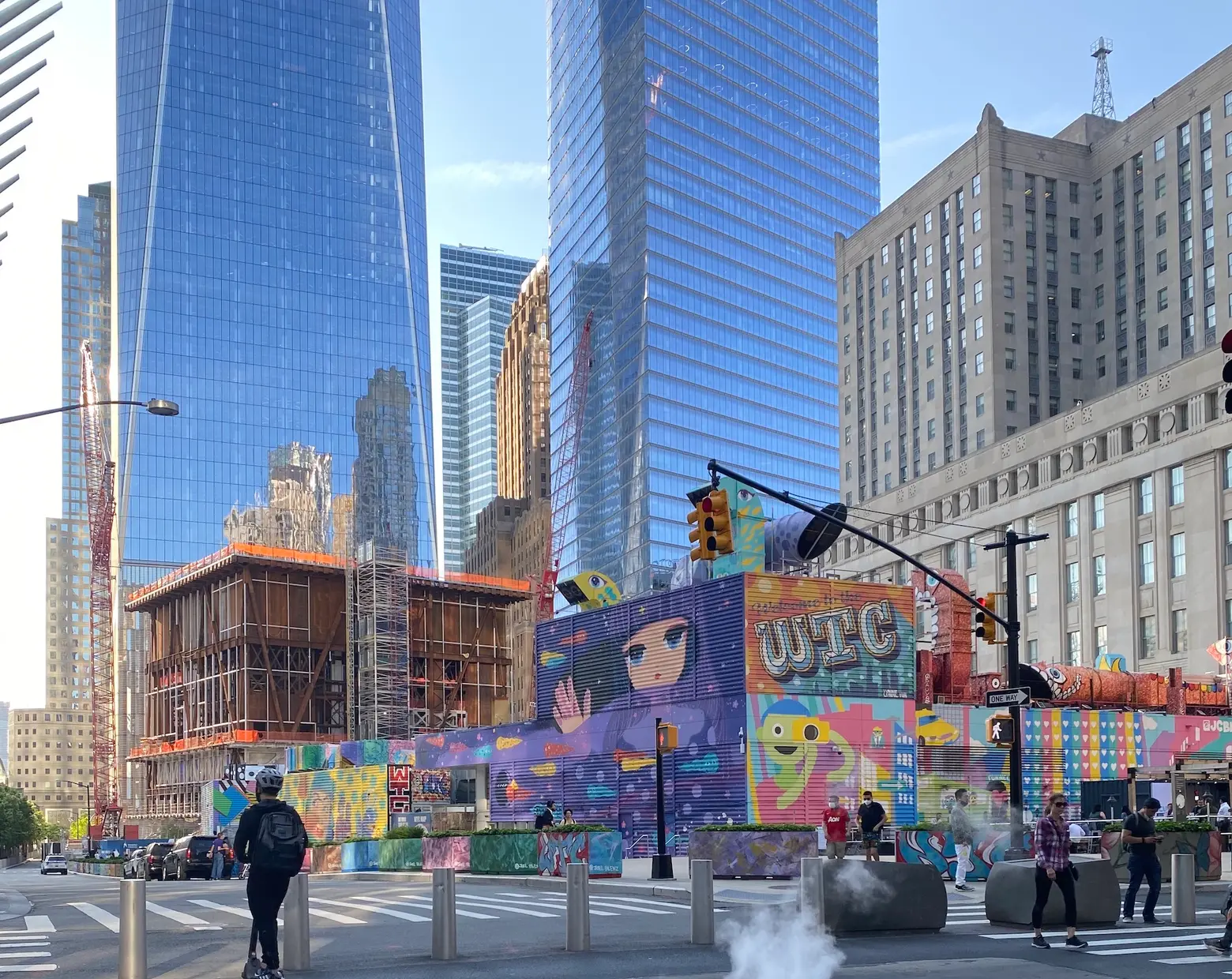
Photo © 6sqft
Located at the southernmost part of lower Manhattan–and at the center of the global financial universe–New York City’s Financial District in many ways represents New York City to the world. Encompassing the area south of City Hall Park, with the corner of Wall and Broad Streets as its center, this bustling grid of streets is also a waterfront neighborhood, surrounded by New York Harbor and the East River. As a backdrop, the towering masts of South Street Seaport’s tall ships recall the maritime history of the city’s earliest days. The business of finance is still anchored here, but as with all New York City neighborhoods, change is around every corner, and the number of residents who call this downtown district home continues to grow.
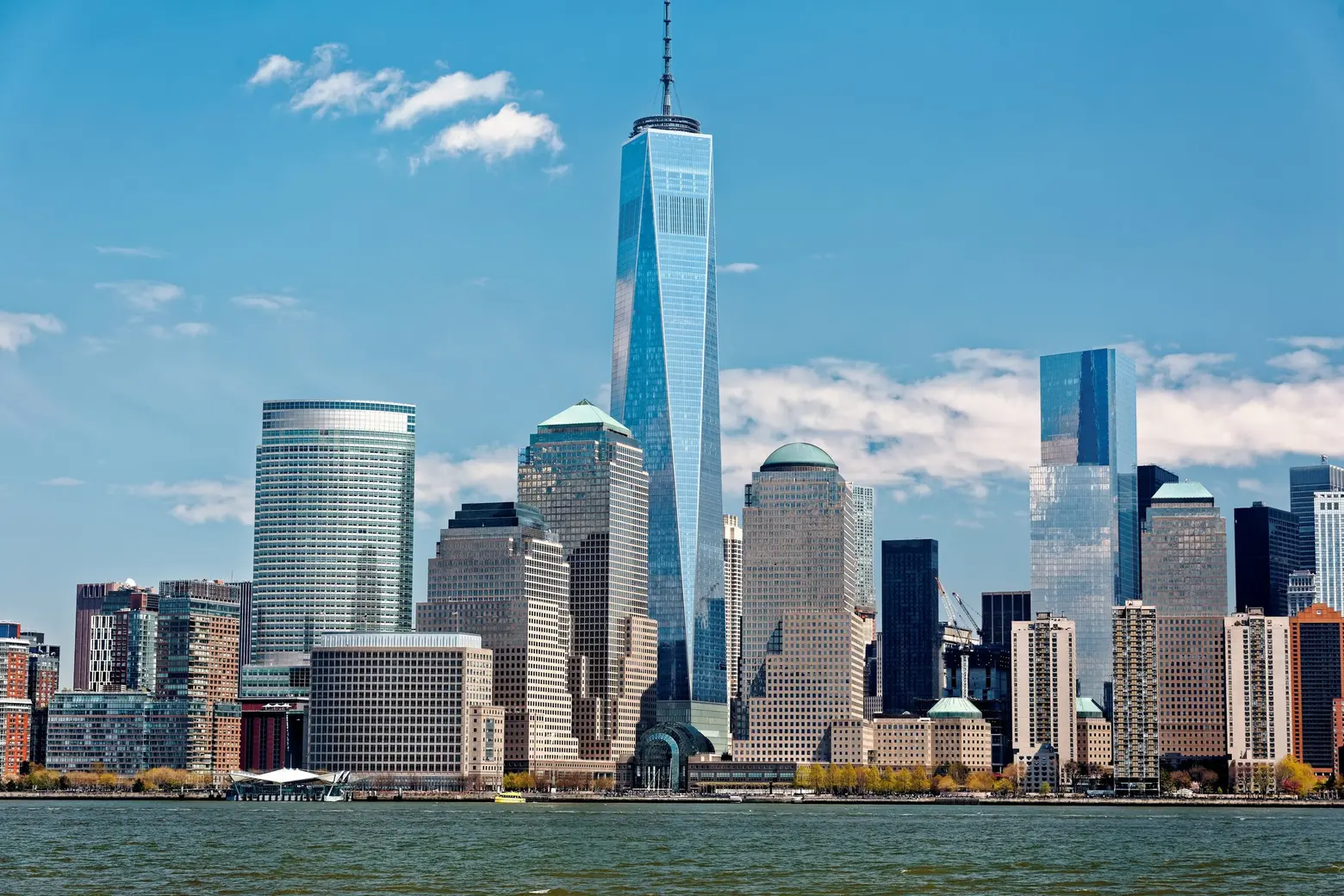 Image courtesy of Michael Vadon’s Flickr
Image courtesy of Michael Vadon’s Flickr
In the neighborhood’s most recent chapter, “Fidi” is both old-school–many businesses and buildings have been here for a century or more–and brand new. There are plenty of longtime residents–the micro-neighborhood of Battery Park City, for example, has long been among the city’s most desirable addresses. But a wave of newcomers has arrived in recent years, adding to a real city community as friends and family follow.
The years following the 9/11 terrorist attacks and subsequent reconstruction have brought about the biggest change. An all-hands effort to help the neighborhood rise from the tragedy in its midst has been more than successful. Exciting new construction–and some of the city’s most innovative architecture–along with fabulous waterfront and skyline views–welcomed New Yorkers of all ages and demographics.
The walk-to-work lifestyle for those who work here added to the draw, along with the convenience of major subways and a ferry and the shopping and entertainment mecca of Tribeca nearby. And a growing number of technology and media companies, such as Spotify and Conde Nast, have made the move to this “new downtown.”
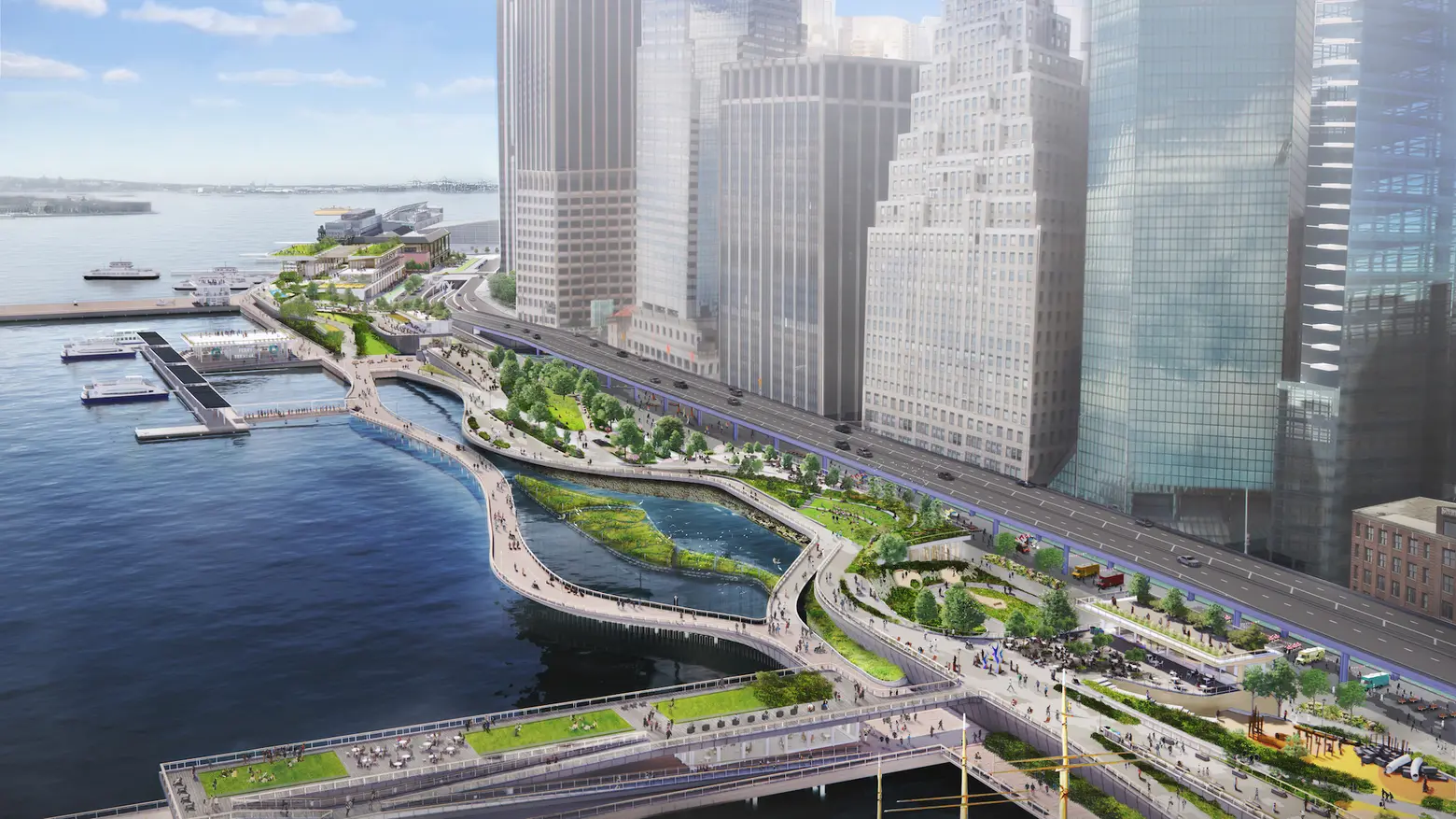 Image: NYCEDC
Image: NYCEDC
The city has taken important steps toward protecting this vital waterfront district from the costly and destructive effects of climate change. The Financial District and Seaport Climate Resilience Master Plan is an environmental blueprint for the Lower Manhattan shoreline that aims toward creating a resilient waterfront that can withstand severe storms and rising sea levels. The recently opened Battery Playscape is one of the city’s largest sustainable parks.
In the 21st century’s third decade, the district continues to be an exciting discovery. It’s still a hub for the global financial industry and home to an active historic waterfront, but it’s also a vibrant residential and destination neighborhood. Noteworthy buildings like 19 Dutch Street, 20 Broad Street, 111 Murray Street, 130 William Street, and 49 Chambers Street have added scores of new neighbors, with many more to come in the near future.
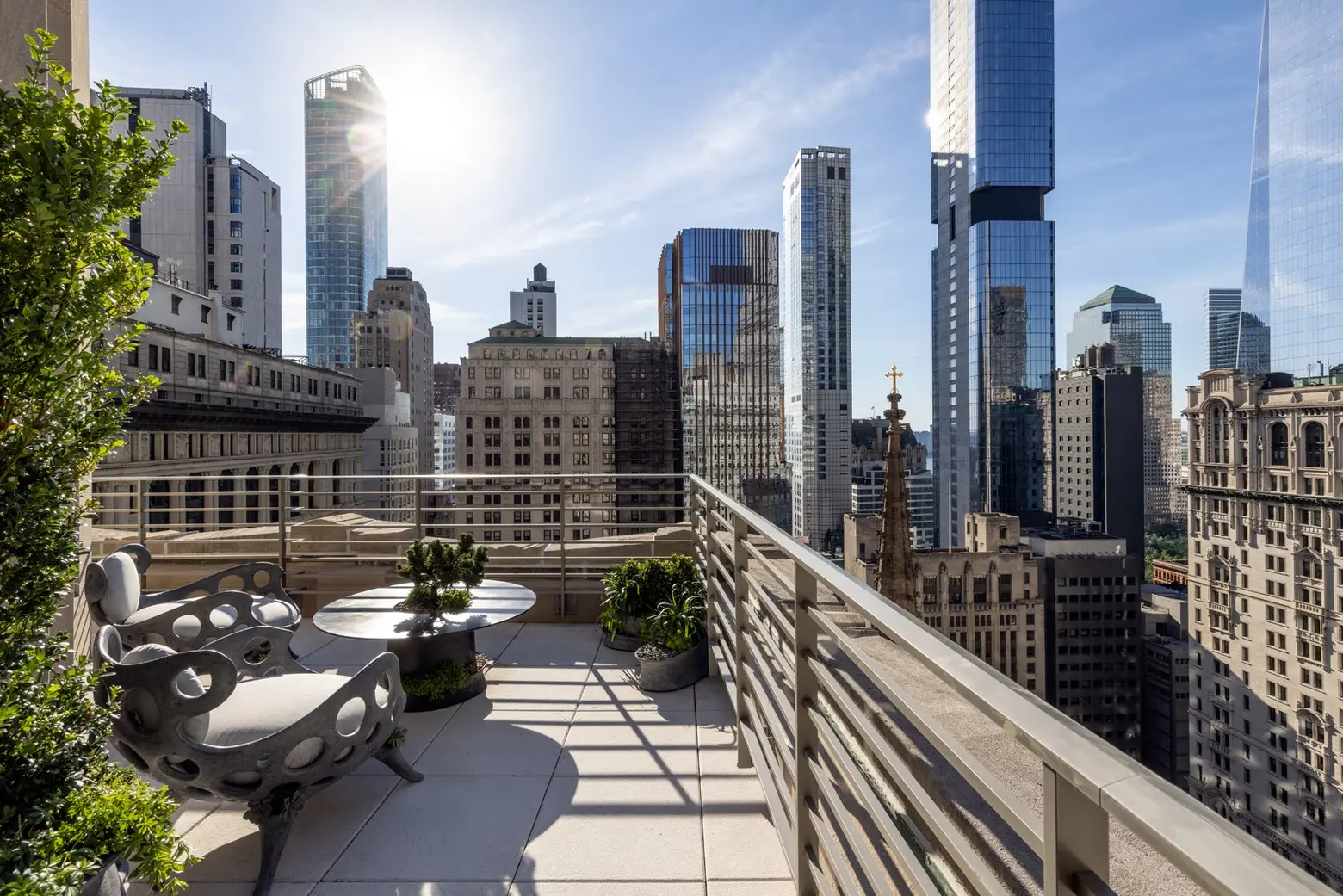 Photo credit: Evan Joseph for Macklowe Properties
Photo credit: Evan Joseph for Macklowe Properties
Iconic office buildings–such as Deco landmark One Wall Street and 55 Broad–are being converted to residential developments. The neighborhood has been a leader in this trend, even before the pandemic created a mobile workforce and lots of empty offices.
“In the initial lower manhattan residential boom, you saw the conversion of 15 Broad, which was one of the old J.P. Morgan buildings, into Downtown by Starck,” Ryan Serhant, head of sales and marketing at Jolie, the new 42-story luxury condo tower at 77 Greenwich Street, said.
“You saw 20 Pine, which was a bank building, converted into The Collection, 20 Pine Street residential condos by Armani/Casa. 88 Greenwich Club residences were offices. What’s cool in this cycle is that you’re finding more unique, more historic conversions.”
With this residential growth, new and familiar restaurants, bars, shops, parks, and cultural events are making this reborn downtown district even more of a 24-hour community when the workday is done. Below, you’ll find some of the 21st-century Financial District’s finest offerings.
Things to see and do in the Financial District
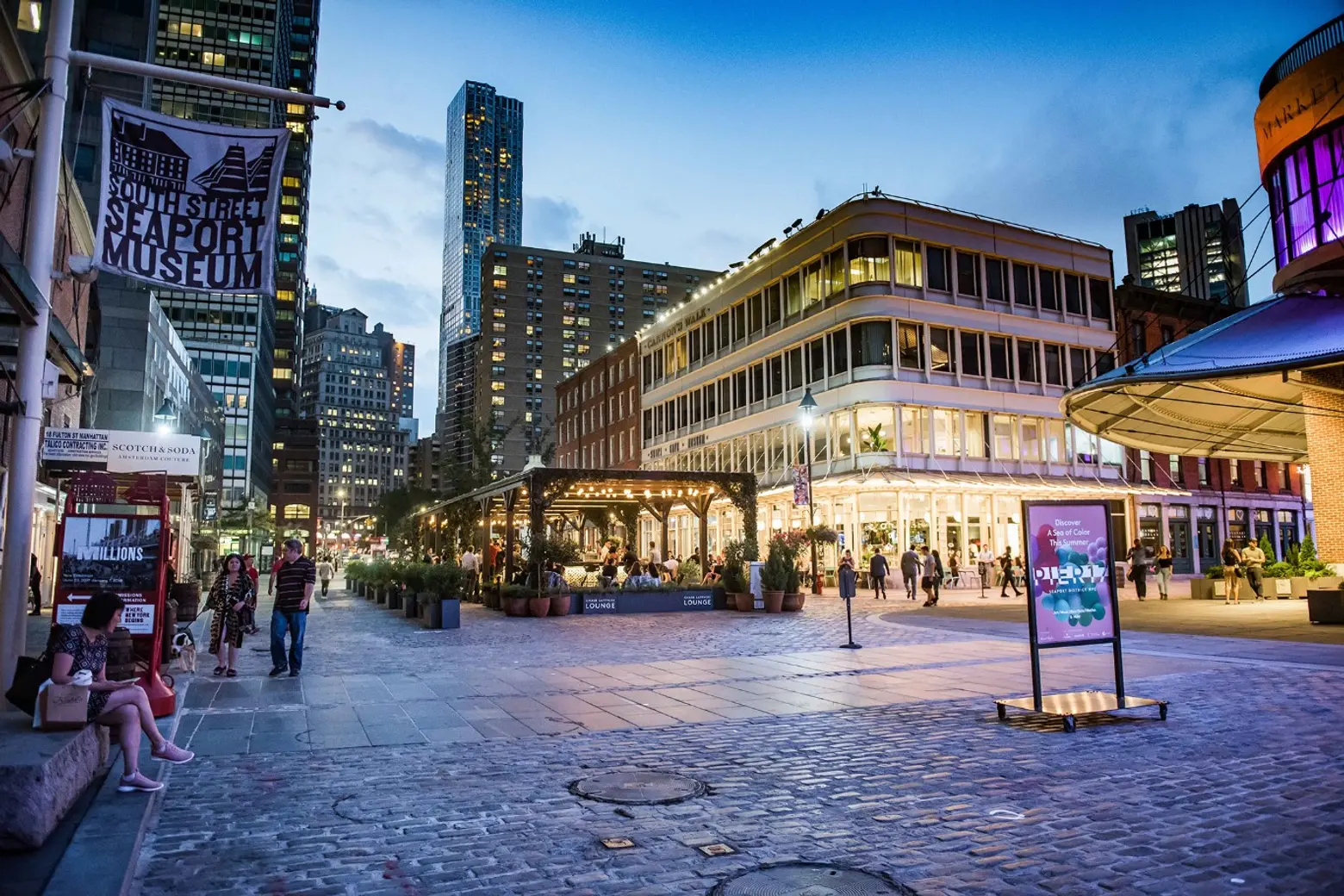
Photo courtesy of The Howard Hughes Corporation
Where to eat and drink
Stone Street Historic District
This cobblestoned street in the heart of the Financial District was, in 1658, the farming community of New Amsterdam’s first paved street. Restored at the end of the 20th century, the charming pedestrians-only street is now a destination, overlooked by renovated historic industrial-era warehouses and lofts and lined restaurants and bars, including Stone Street Tavern, Adrienne’s Pizza Bar, Ulysses, and many other favorites old and new.
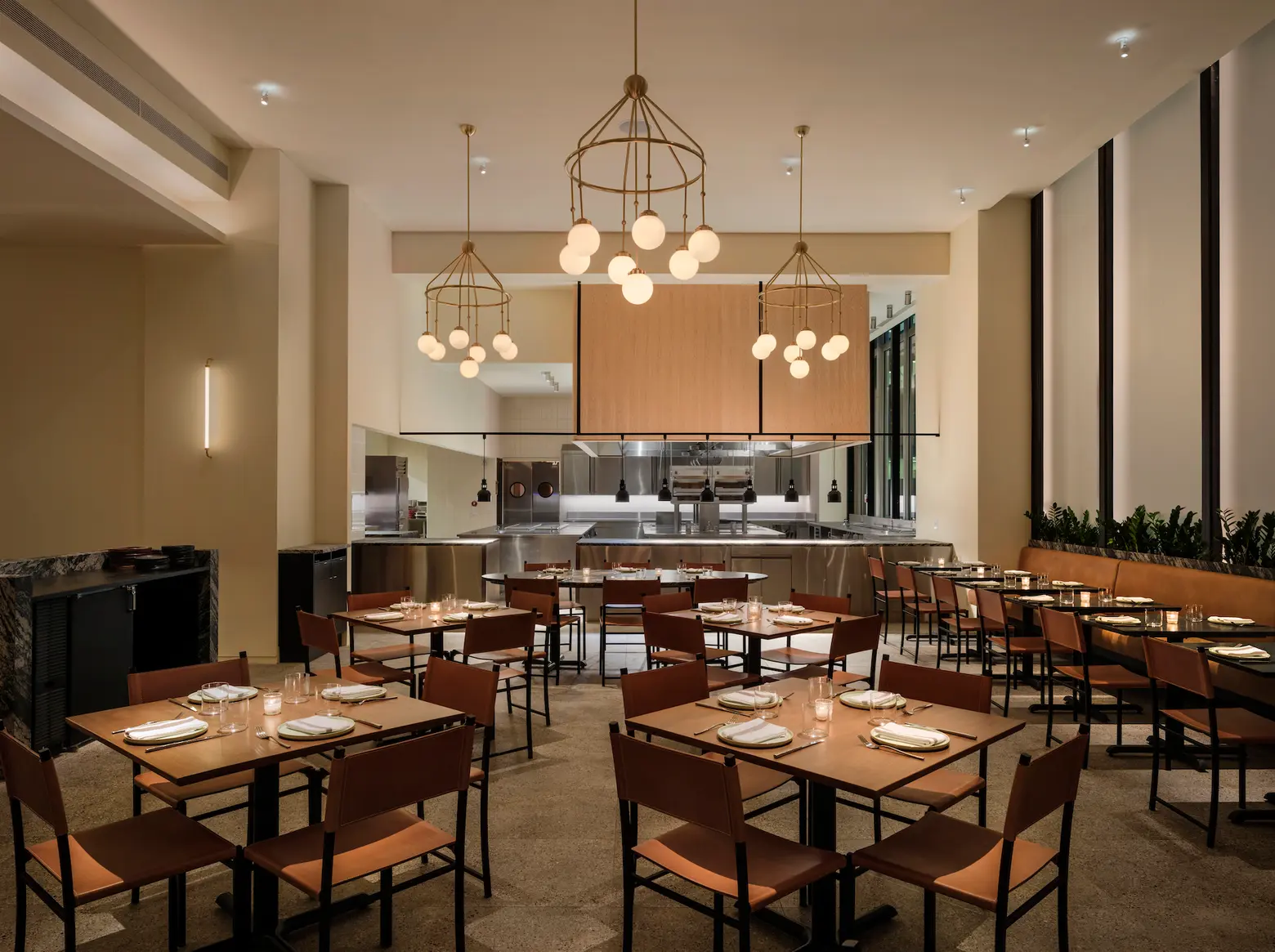 Photo courtesy of Crown Shy
Photo courtesy of Crown Shy
Crown Shy
Located on the ground floor of the landmarked 70 Pine Street, this American cuisine favorite features a menu with something for everyone, from grilled chicken to olive bread.
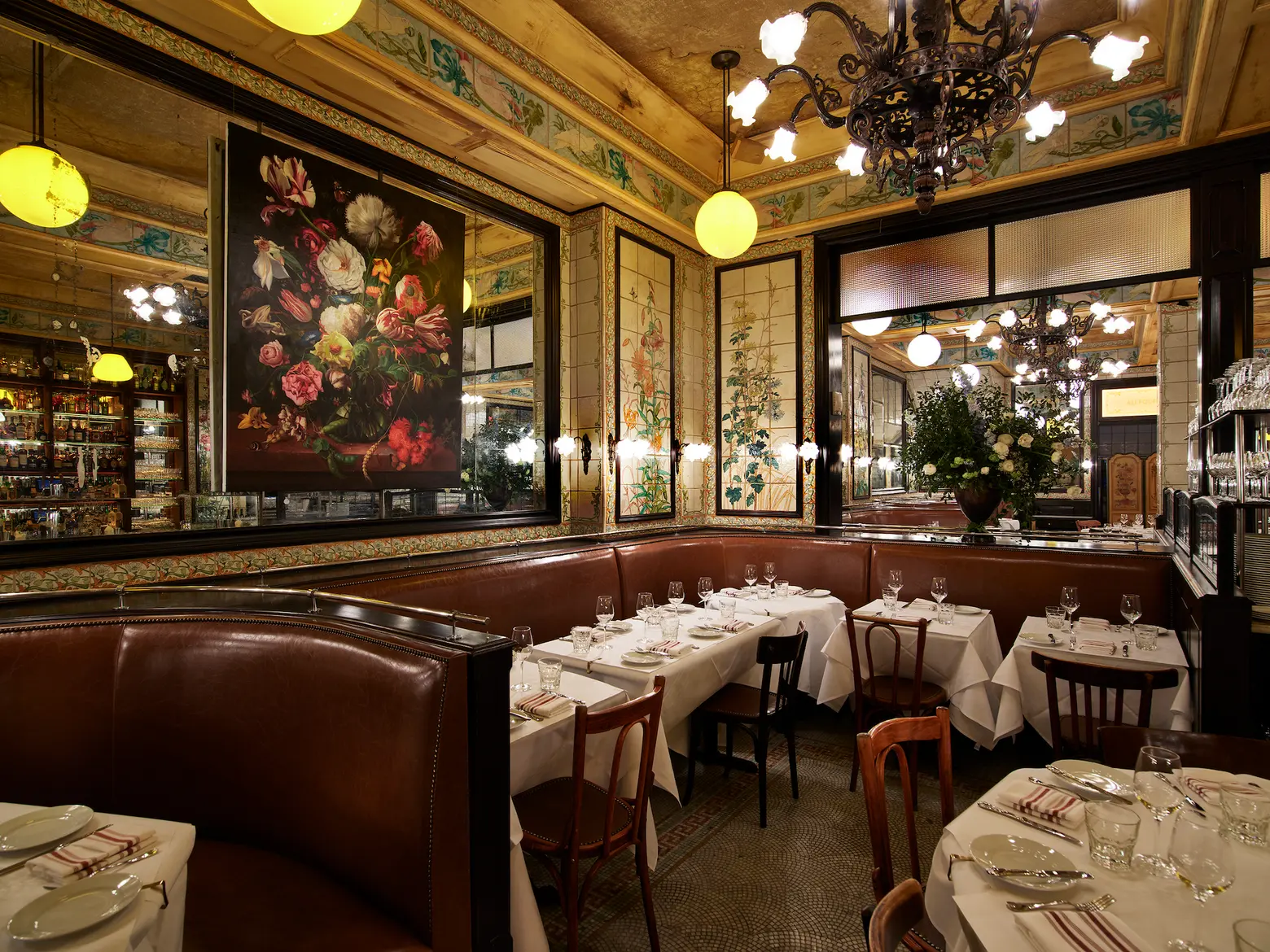 Photo credit: Bill Milne
Photo credit: Bill Milne
Le Gratin
Michelin-starred Chef Daniel Boulud recently opened this restaurant on the ground floor of the Beekman Hotel, one of the city’s most iconic spaces. Le Gratin offers a casually romantic dining experience inspired by the bistros of Boulud’s hometown, Lyon, France. The menu offers classic French and Lyonnais specialties and an extensive wine list with over 100 selections. Le Gratin replaces Keith McNally’s Augustine, which closed in 2020 due to the pandemic after four years at the Beekman.
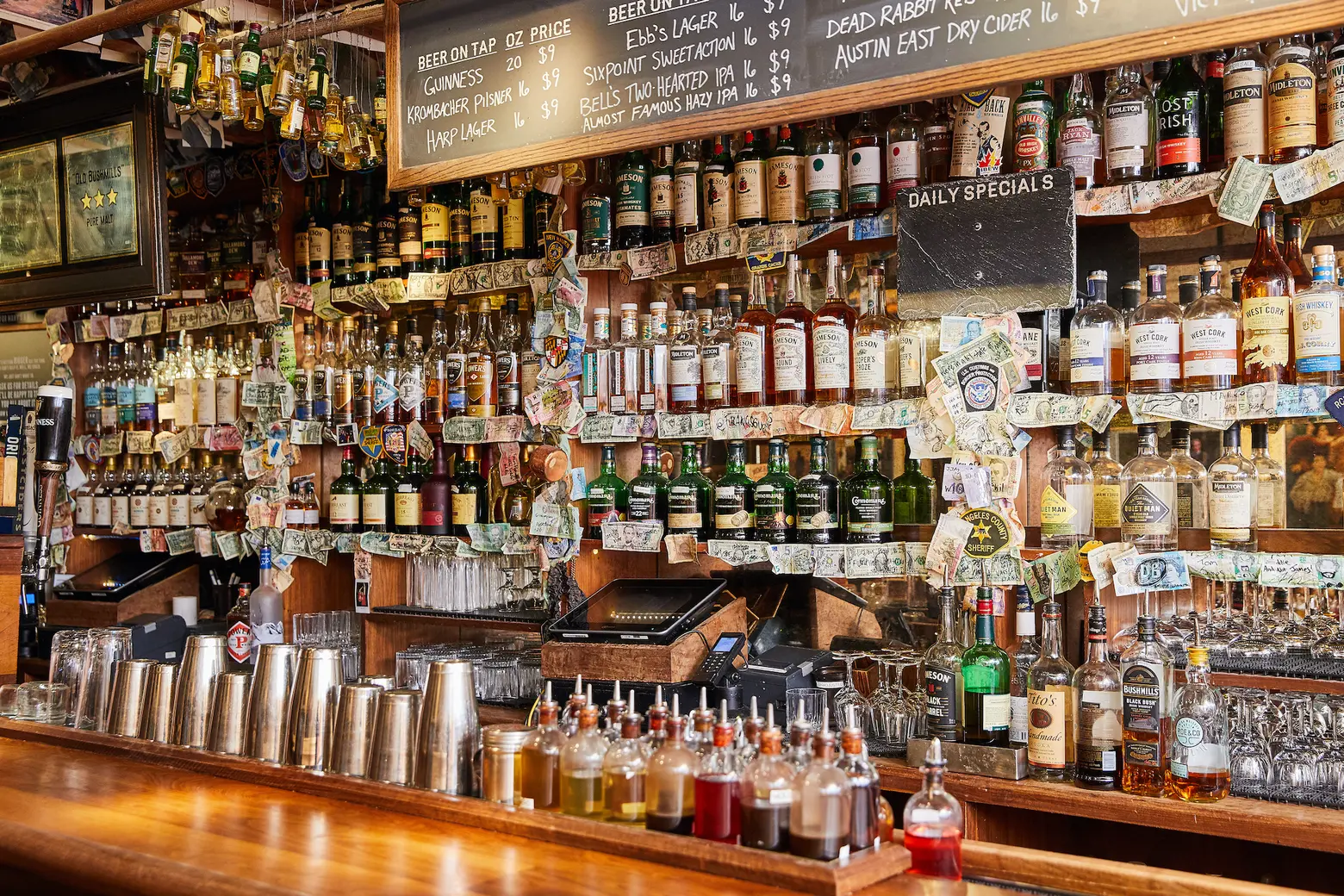 Photo courtesy of Crown Creative/The Dead Rabbit
Photo courtesy of Crown Creative/The Dead Rabbit
The Dead Rabbit
The perfect neighborhood spot for elevated pub grub on a casual date or weeknight bite also serves as a classic gathering spot. There’s an old-school vibe to the bar, and quirky features like whisky served from dainty teacups coexist with a classic Irish pub ambiance.
Hole in the Wall
This Aussie-owned brunch spot has several locations throughout NYC. The Fidi location is a neighborhood go-to for fluffy waffles and bloody Mary-fueled afternoons.
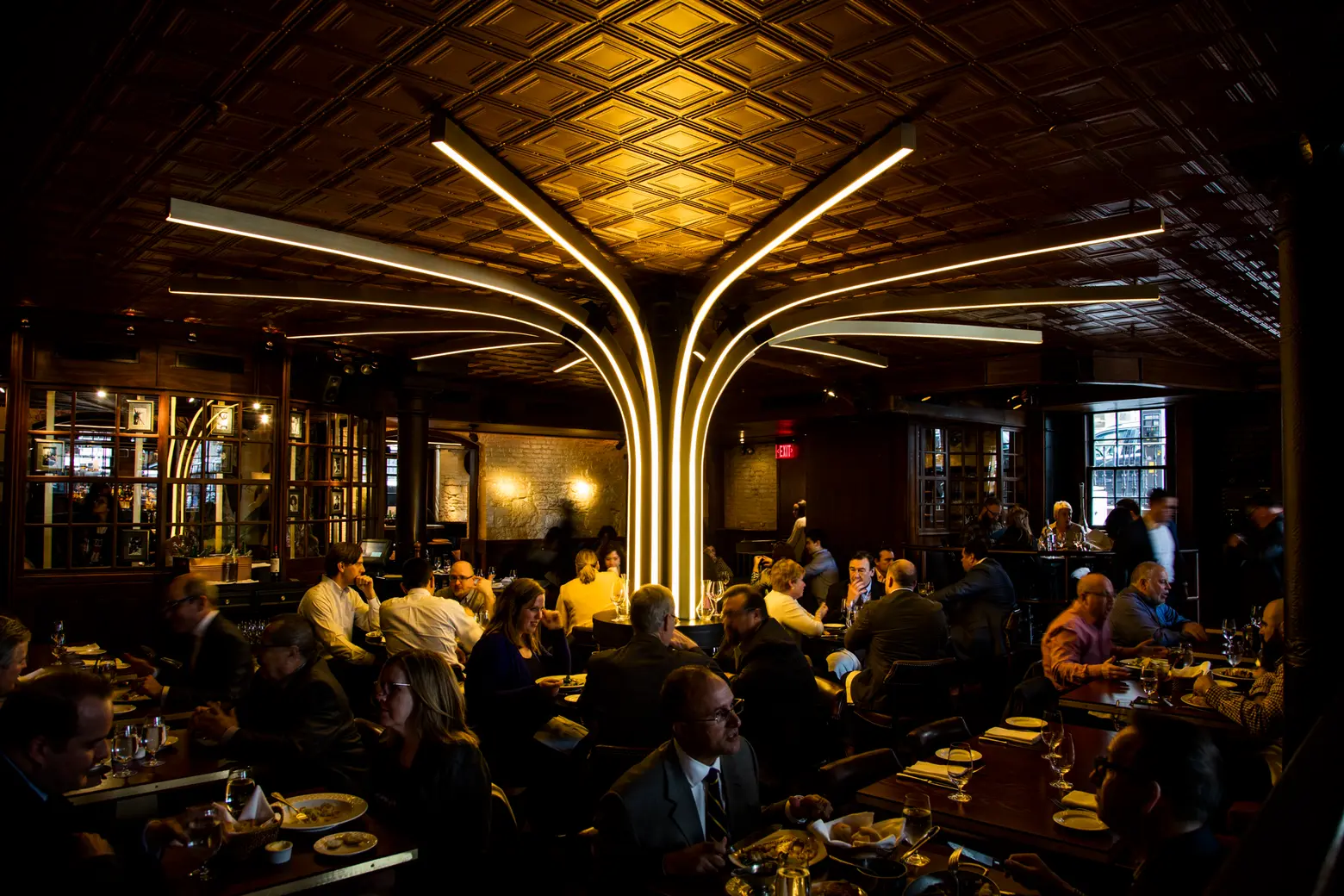
Photo courtesy of Harry’s Restaurant Group
Harry’s
This classic steakhouse has sleek, dark interiors, futuristic lighting, an impressive wine list, and a pub room for more casual dining.
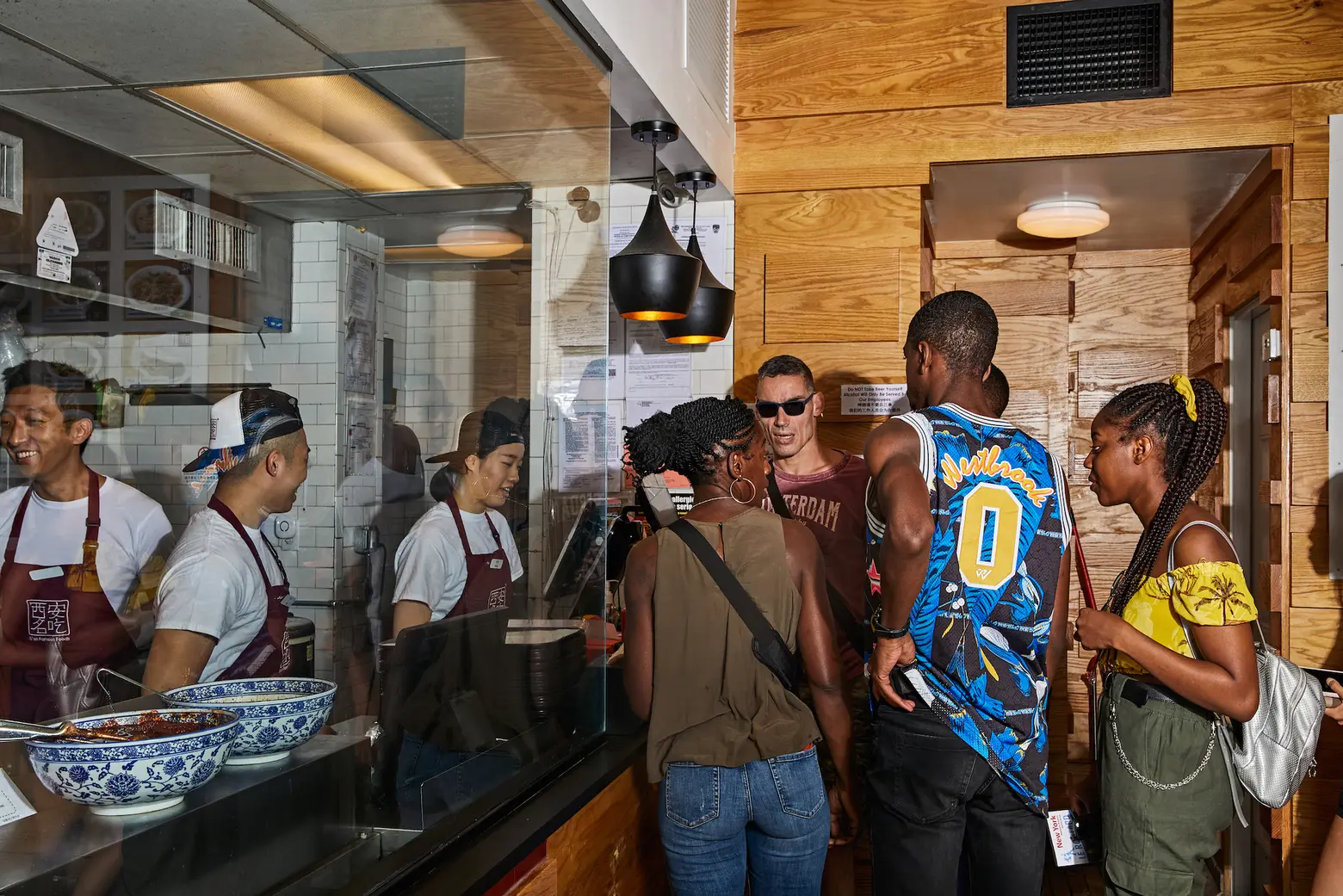 Photo by Jenny Huang
Photo by Jenny Huang
Xi’an Famous Foods
This New York City chain of restaurants serves what is known throughout the five boroughs to be the city’s best western Chinese cuisine. So famous is XFF that they recommend visitors “come with patience during peak hours.”
Schilling
Run by Michelin-starred chef Eduard Frauneder, Schilling serves Austrian comfort food like spaetzle, with Mediterranean highlights in an intimate day-to-night bistro setting that isn’t always easy to find in a neighborhood known for pubs and steakhouses. Classic cocktails complement the market-driven seasonal menu.
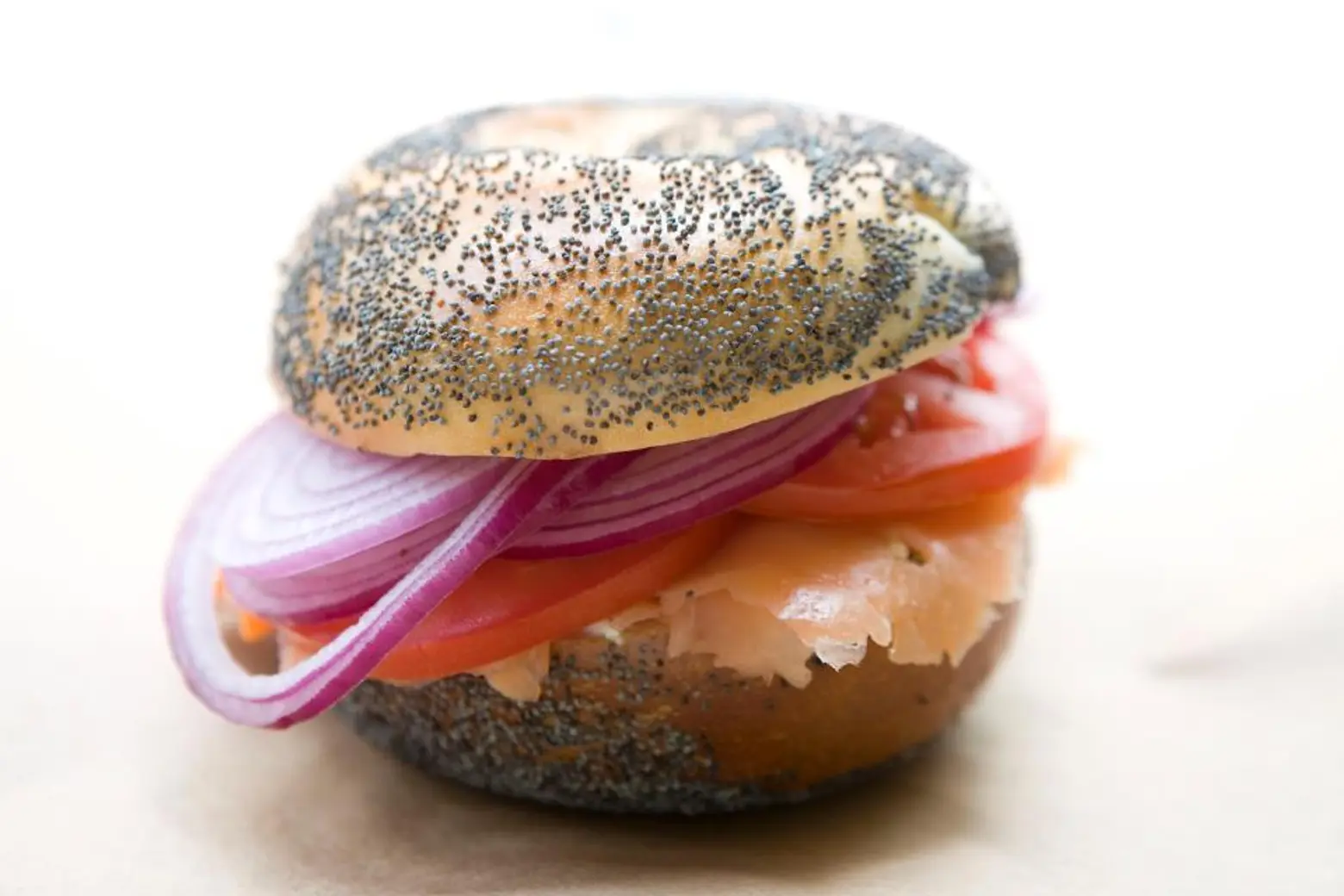
Photo courtesy of Leo’s Bagels
Leo’s Bagels
Leo’s is a definite contender in the ongoing authentic bagel cage match. The top-quality chewy bagels here are up to snuff, joined by traditional deli fare like a selection of fish, spreads, and “other nosh.”
Eataly New York Downtown
This hearty European-style food market got its start in Chelsea and quickly made its way to the hearts of just about everyone who loves food. From peak season ingredients to classic cuisine, Eataly is a one-stop trip to authentic Italian grocery shopping and dining, no airfare required.
 Photo credit: Emily Andrews / Manhatta
Photo credit: Emily Andrews / Manhatta
Manhatta
Sixty floors above downtown Manhattan, Danny Meyer’s quintessentially New York City bar and restaurant features an inspired menu, inspirational cocktails, and a fabulous view, with crowds arriving nightly to show their appreciation.
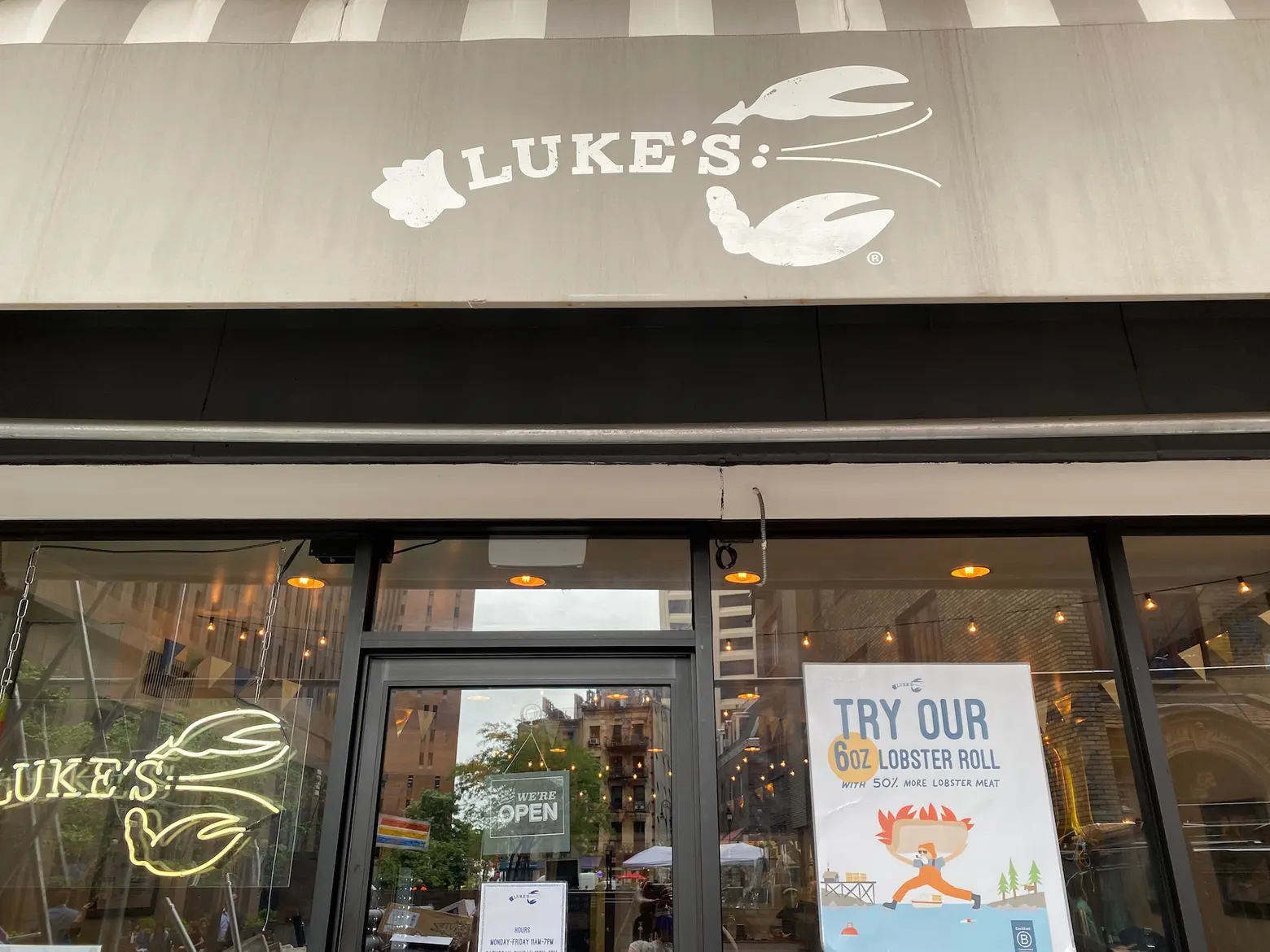 Photo courtesy of Luke’s Lobster
Photo courtesy of Luke’s Lobster
Luke’s Lobster
New York City’s favorite lobster roll shop comes through with the buttery seafood indulgence a stone’s throw from the New York Stock Exchange, the Brooklyn Bridge, and One World Trade. Stop by for a lobster roll and a beer–or make it a combo!
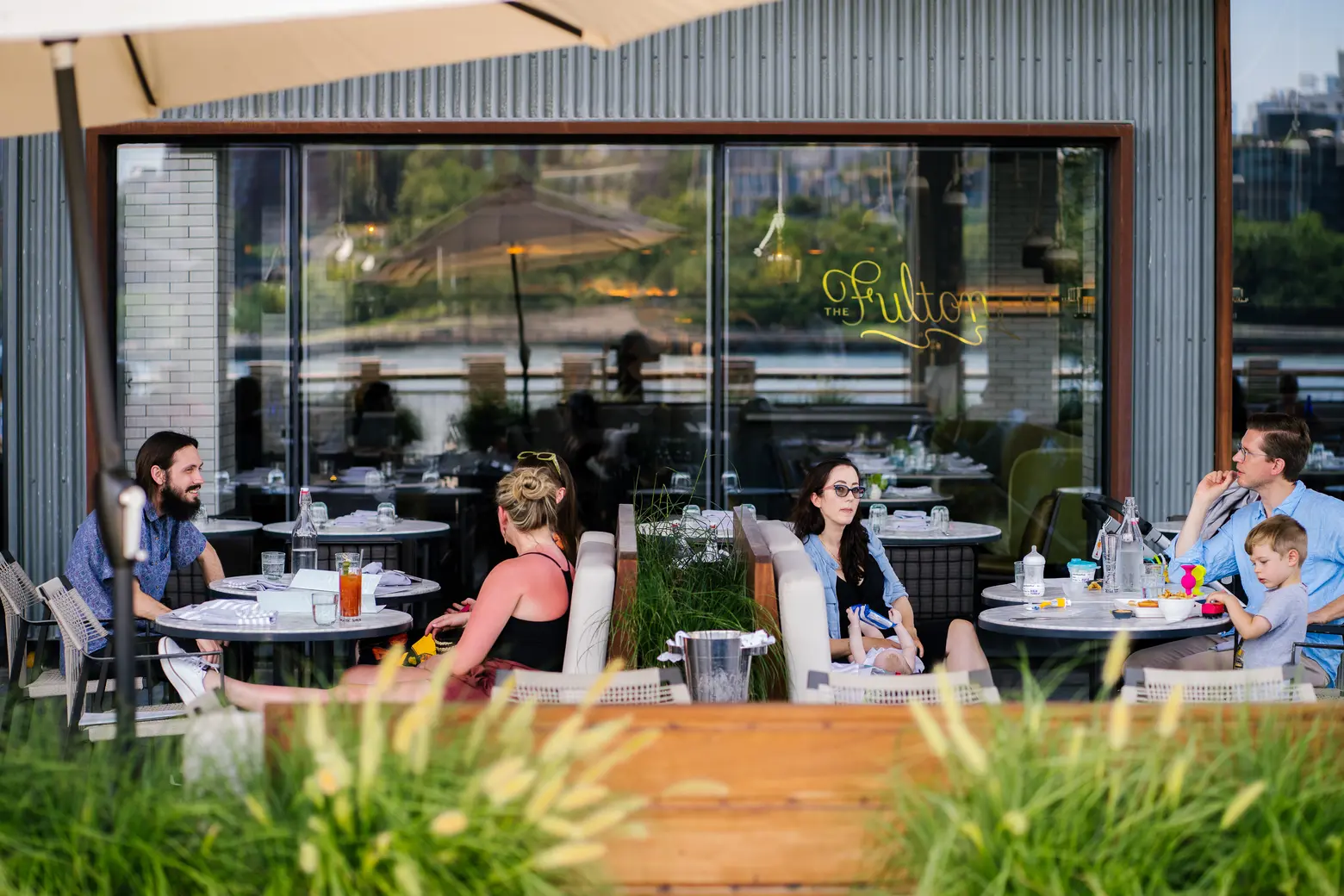 Photo courtesy of The Fulton
Photo courtesy of The Fulton
The Fulton
Chef Jean-Georges Vongerichten invites diners to “rediscover the romance of the sea” with a menu that focuses on the ocean’s bounty in the form of delights like whole black sea bass and other local, sustainable favorites. In the meantime, the restaurant’s home within a re-invigorated Pier 17 complex is helping New Yorkers and visitors to rediscover the neighborhood.
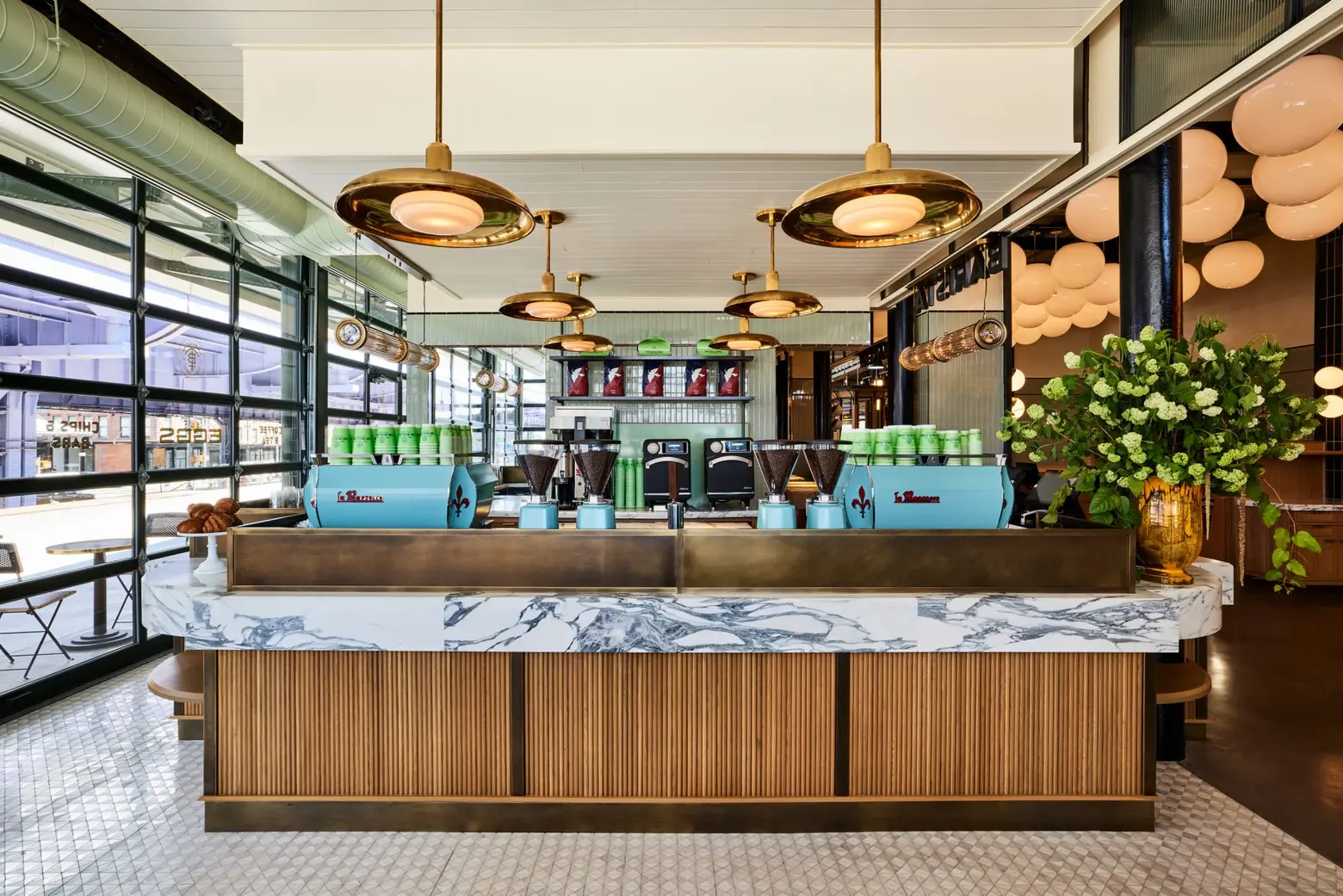 T Cafe at the Tin Building. Photo credit: Nicole Franzen
T Cafe at the Tin Building. Photo credit: Nicole Franzen
Tin Building
Chef Jean-Georges Vongerichten’s latest culinary hotspot is located in the historic Tin Building, one of the two surviving structures from the historic Fulton Fish Market converted into a 53,000-square-foot marketplace that includes grocery stores, six full-service restaurants, six quick-service counters, four bars, and other retail and private dining offerings.
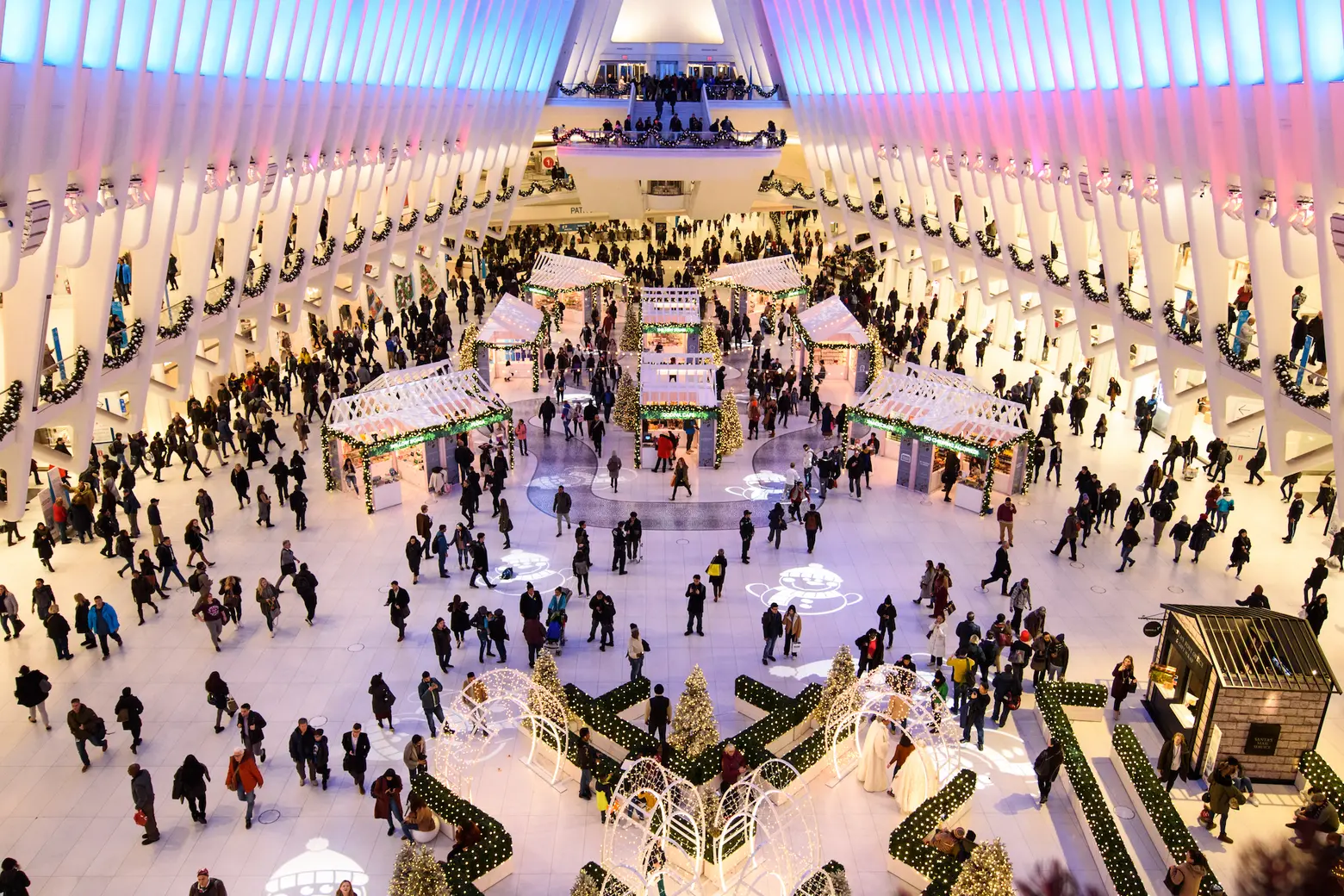 Photo courtesy of Westfield World Trade Center
Photo courtesy of Westfield World Trade Center
Where to shop
Westfield World Trade Center
Within Santiago Calatrava’s Oculus, the most eye-catching structure in the new 16-acre World Trade Center complex, this shopping destination rival’s the city’s best. You’ll find at least 67 shops from Apple to UGG, and 29 places to grab a bite, including a market during the winter holidays and a Green Market and Smorgasburg outdoor food court just outside in warm weather.
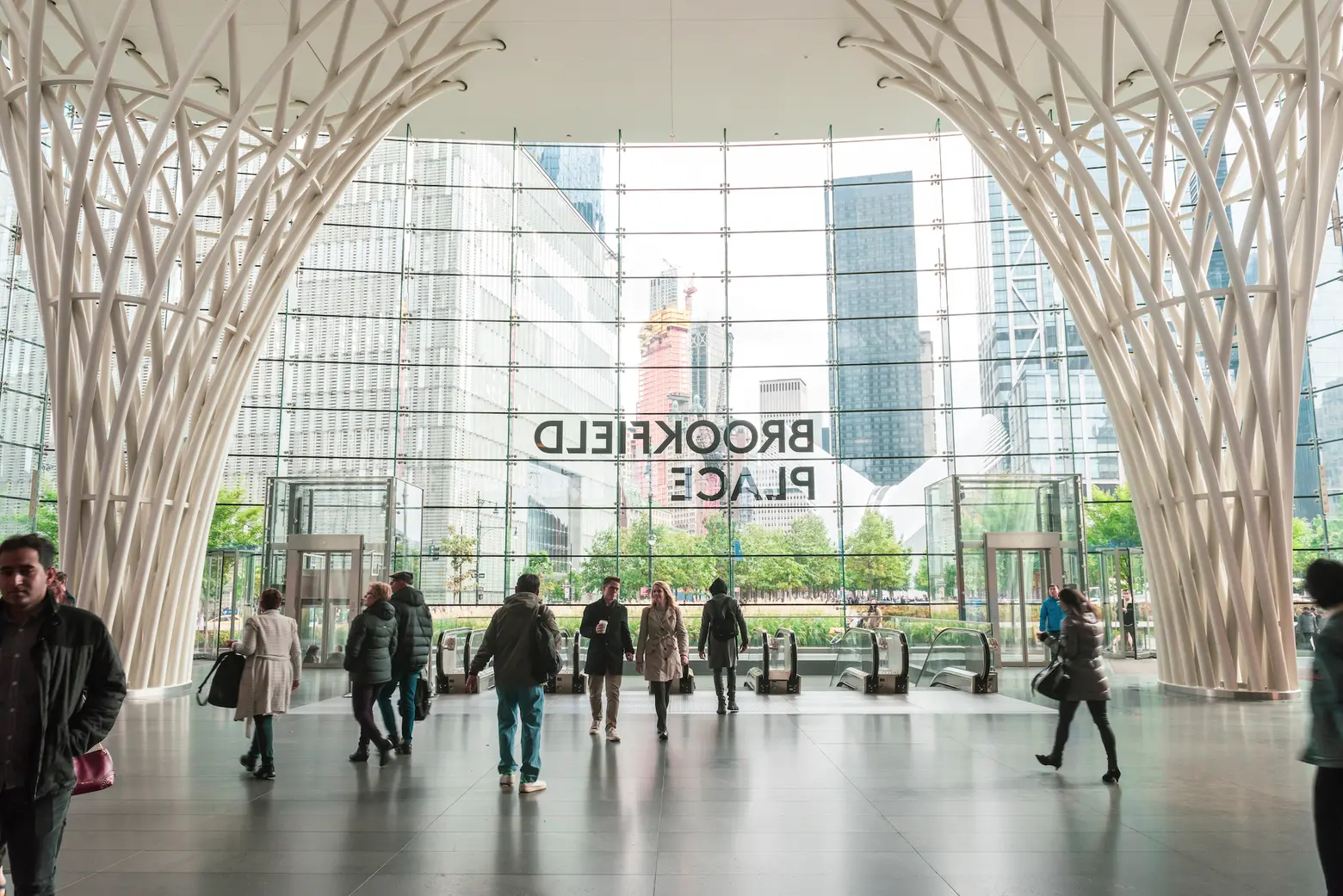 Photo credit: Heidi Lee courtesy of Brookfield Place
Photo credit: Heidi Lee courtesy of Brookfield Place
Brookfield Place
This 14-acre, 5-building complex on the Hudson River brings together modern office space, cultural experiences, curated dining, and world-class shopping, and its indoor and outdoor public spaces host a year-round roster of events from art installations to live music. As a shopping destination, it offers high-end boutiques like Bottega Veneta and Louis Vuitton that share space with favorites like J. Crew and Lululemon.
Hermès New York Wall Street
This fashion classic is actually on Broad Street, but the name conveys the kind of gravitas associated with the upscale purveyor of men’s and women’s apparel and accessories.
Urban Outfitters
If Hermès isn’t your bag, the Fidi outpost of the hipster fast fashion emporium chain is just down the street in the glass-clad base of a Pace University dormitory building.
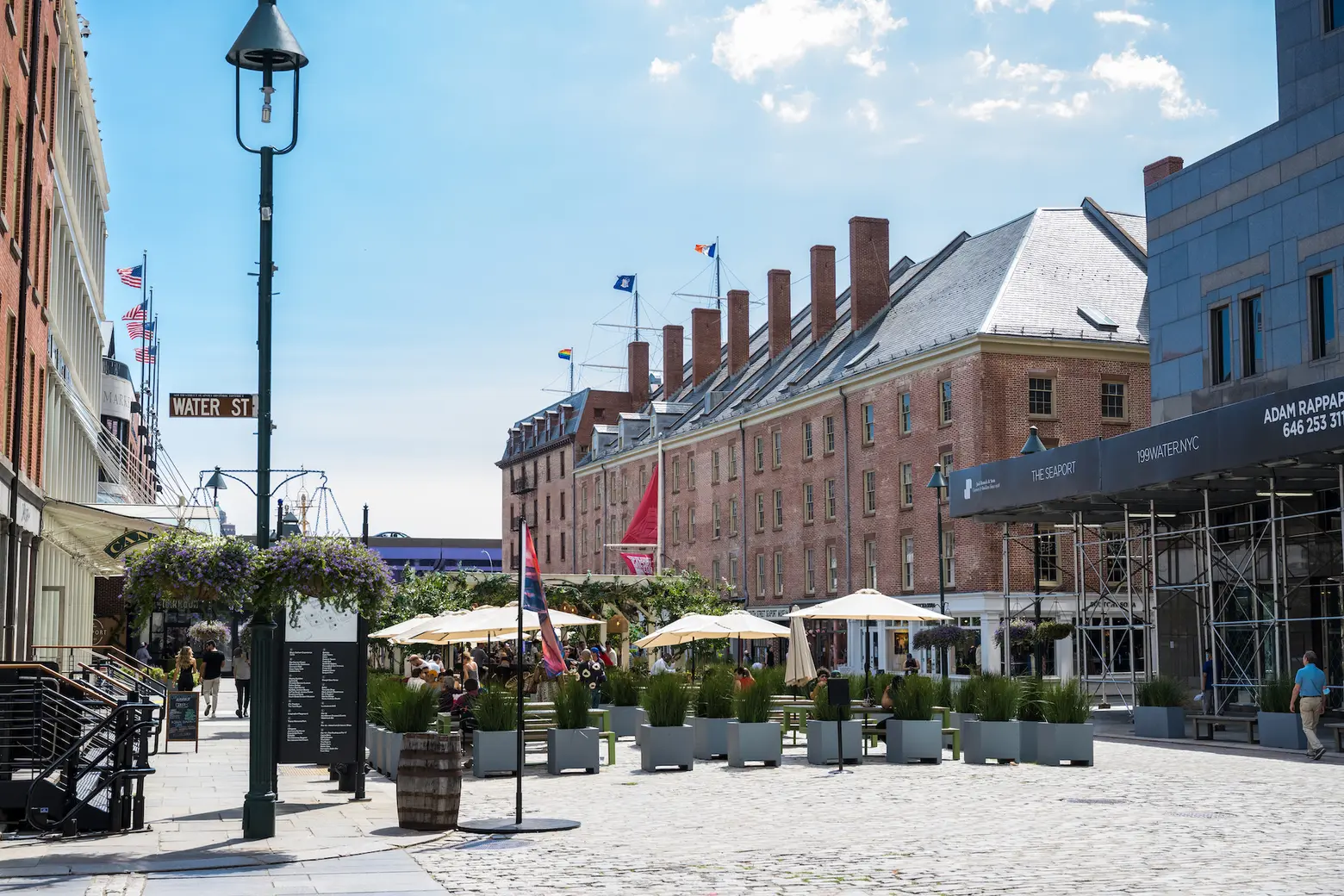
Photo credit: Richard Bowditch
Events and culture
The Seaport/ Pier 17
The South Street Seaport historic district is home to the Seaport Museum and the city’s largest concentration of restored early 19th-century commercial buildings. Pier 17 is a year-round hub of food, drink, art, architecture, retail, and entertainment offerings including one-of-a-kind gallery exhibits and events, live music daily, free fitness classes, culinary experiences and the unique seafaring experience of Manhattan by Sail.
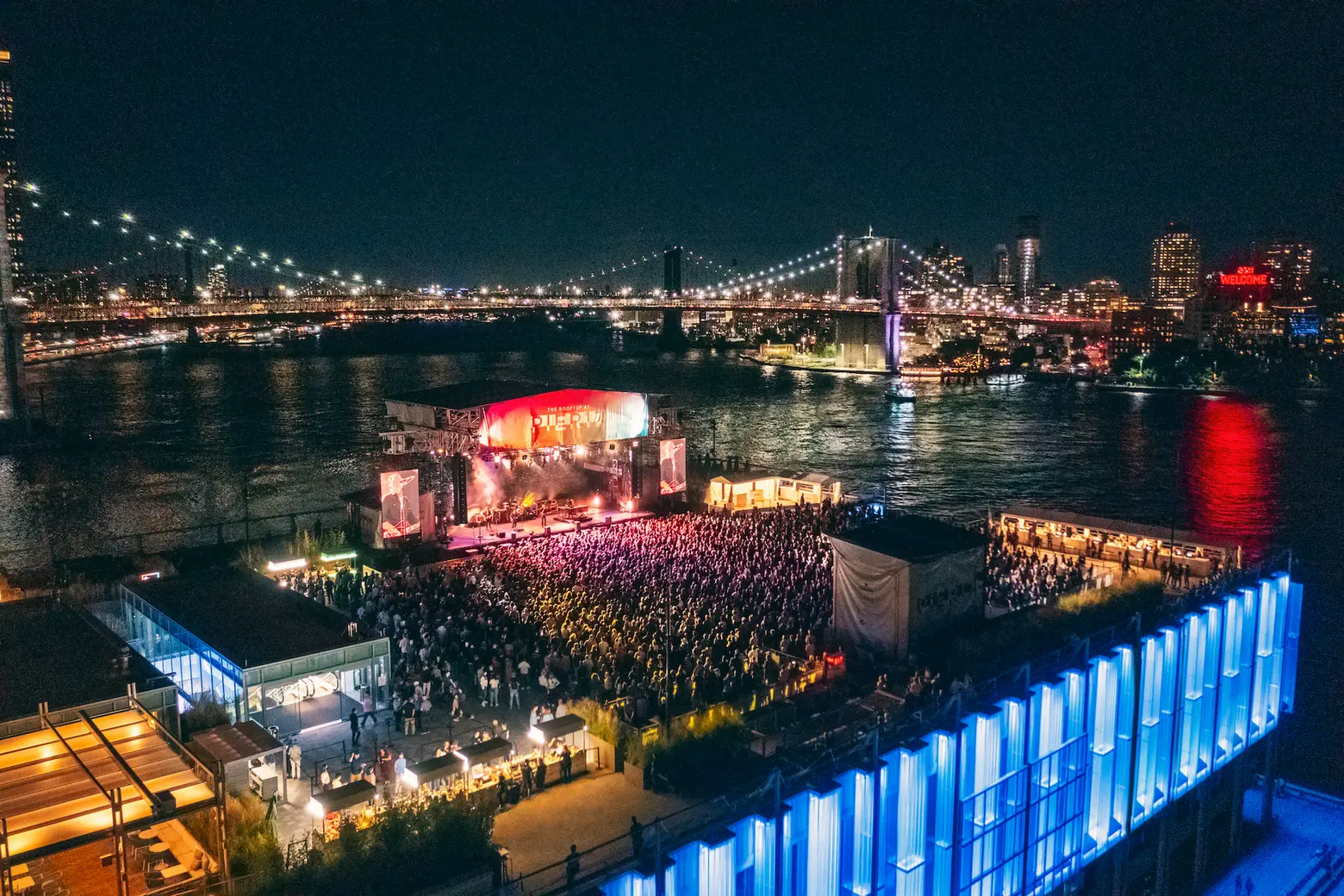 Photo credit: Keeyahtay Lewis
Photo credit: Keeyahtay Lewis
A highlight is the Summer Concert Series on The Rooftop at Pier 17, New York City’s premier open-air rooftop concert venue. This year’s calendar promises over 60 shows featuring artists like Pusha T, Billy Strings, girl in red, Blondie, Elvis Costello & The Imposters, Vance Joy, and more. The venue’s 4th of July celebrations are also epic, offering a weekend filled with live music performances, food, and drink pop-ups, and more.
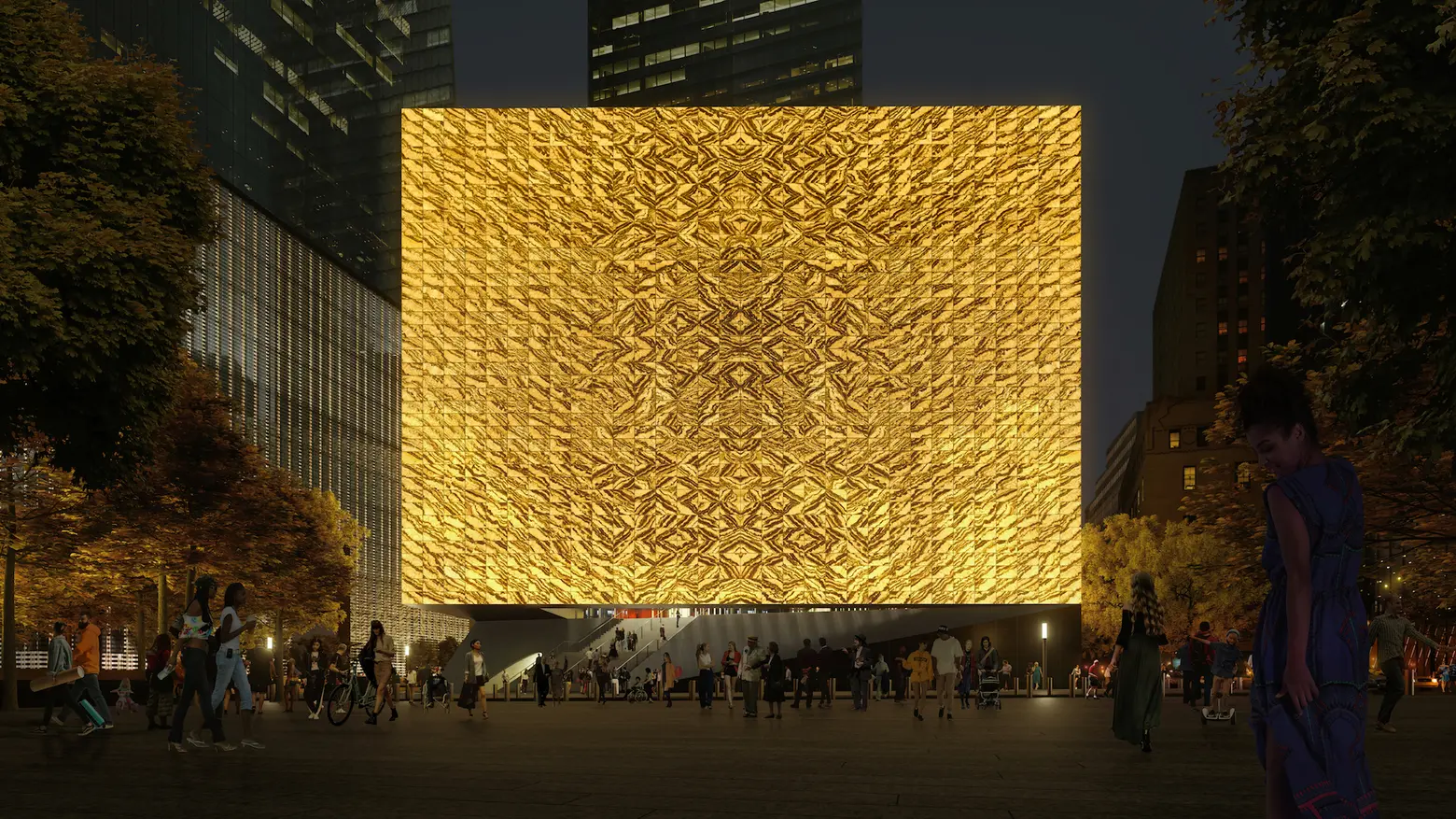
The Perelman at night, facing south © Luxigon
The Ronald O. Perelman Performing Arts Center
First envisioned nearly two decades ago, The Ronald O. Perelman Performing Arts Center (PAC) is expected to open in 2023 as a new home for emergent and established artists in theater, dance, music, chamber opera, film, and media from NYC and around the world. Located at the World Trade Center, the PAC will help further redefine lower Manhattan as a cultural destination and a testament to the power of the arts to inspire and unite.
Housed in a 138-foot-tall glowing cube measuring 129,000 square feet across three levels, the center will feature flexible performance spaces that can be combined. On the lobby level, there is a bar, cafe, terrace, and publicly accessible stage.
River to River Festival
Presented by Lower Manhattan Cultural Council (LMCC), the River To River Festival is downtown New York City’s free summer arts festival, celebrating artistic and creative diversity across disciplines, and presenting live art and installation in public spaces and in partnership with leading institutions in lower Manhattan. come together in mutual support.
Parks and public places to gather
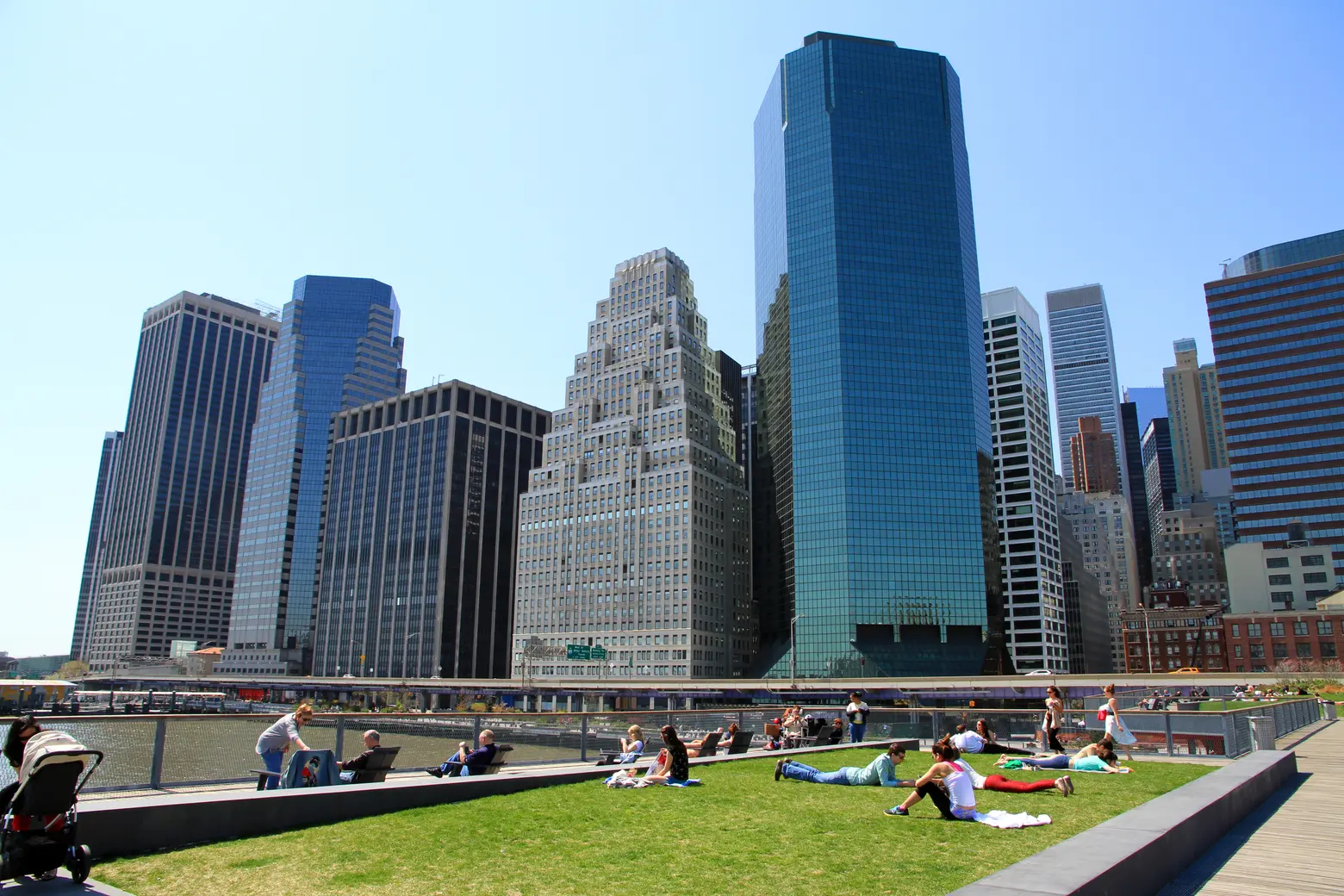 Photo credit: Wikimedia cc
Photo credit: Wikimedia cc
Pier 15 East River Esplanade
This public pier features a two-story structure for picnics and soaking up the sun beside the river, plus a bar/cafe. You’ll also find two half basketball courts, a bocce/petanque area, a dog run, and an open, elevated exercise area with publicly accessible equipment. The park connects to a continuous two-way bike lane with 24-hour lighting.
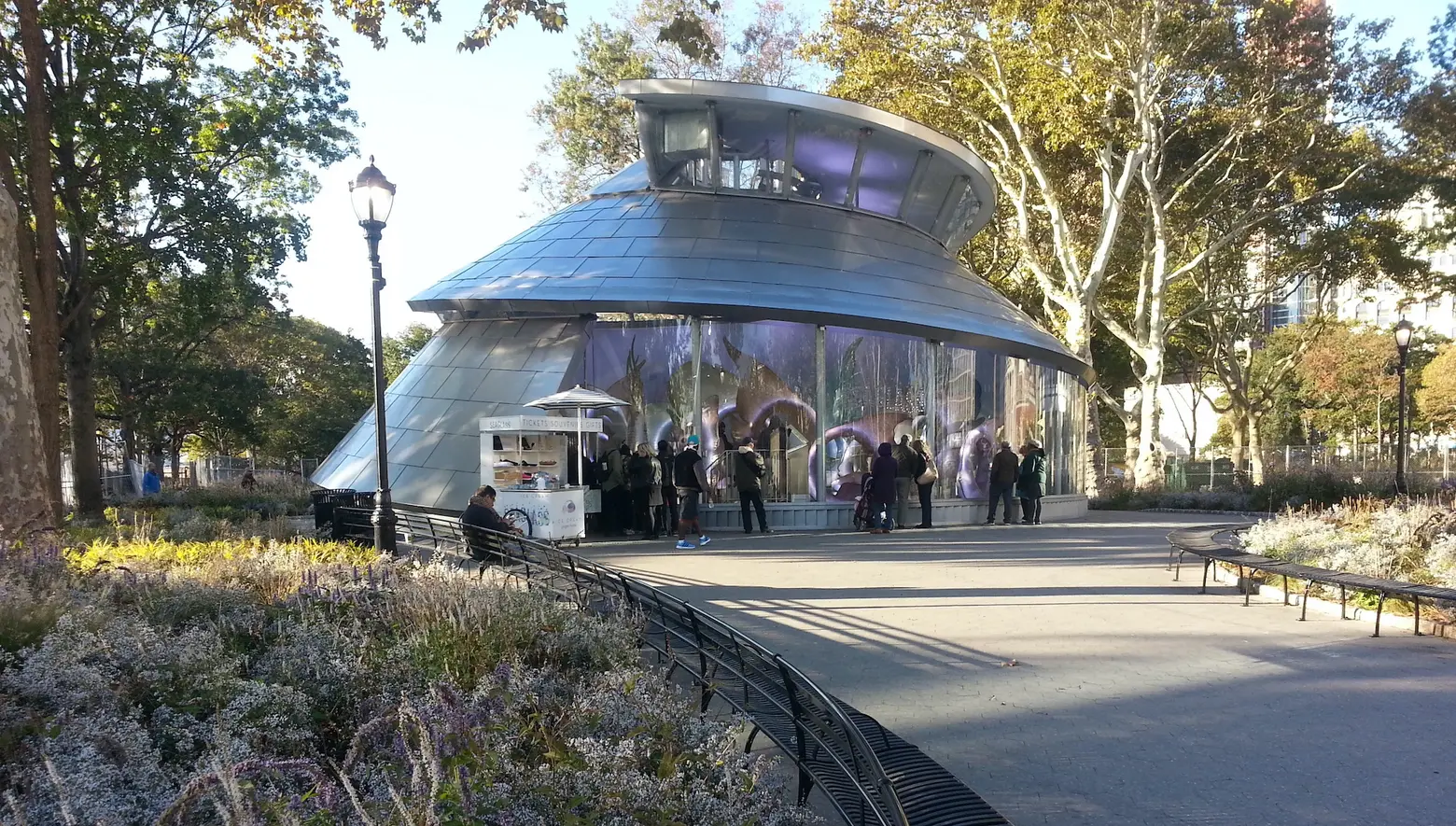 Photo courtesy of Battery Conservancy
Photo courtesy of Battery Conservancy
The Battery/Battery Park
For more than 200 years, The Battery has been part of New York City’s history. In 1855, Castle Garden, situated inside the Park, became the world’s first immigrant depot decades before Ellis Island was built or the Statue of Liberty arrived. People from around the world still visit The Battery for a view of the city’s past while enjoying the present. All summer long, concerts play on its grounds, and waterfront and flower gardens create a special place to wander. Highlights include an urban farm, the SeaGlass Carousel, and sunset yoga sessions.
North of The Battery, the micro-neighborhood of Battery Park City contains 36 acres of public parks and plazas, managed by The Battery Park City Authority. Within is a world-renowned collection of 20th- and 21st-century publicly-accessible sculptures. While there are nearly 20 permanent sculpture installations throughout Battery Park City, there is also a constant stream of new art installed on a temporary basis throughout the park.
The Battery Playscape
The recently opened Battery Playscape is one of the city’s largest sustainable parks. It expanded the existing playground, which was damaged in Hurricane Sandy. In the name of coastal resiliency, it features a rainwater runoff system and durable landscaping. The $18 million playground offers treehouses, stone slides and a sand play area dotted with hidden sculptures for youngsters to discover.
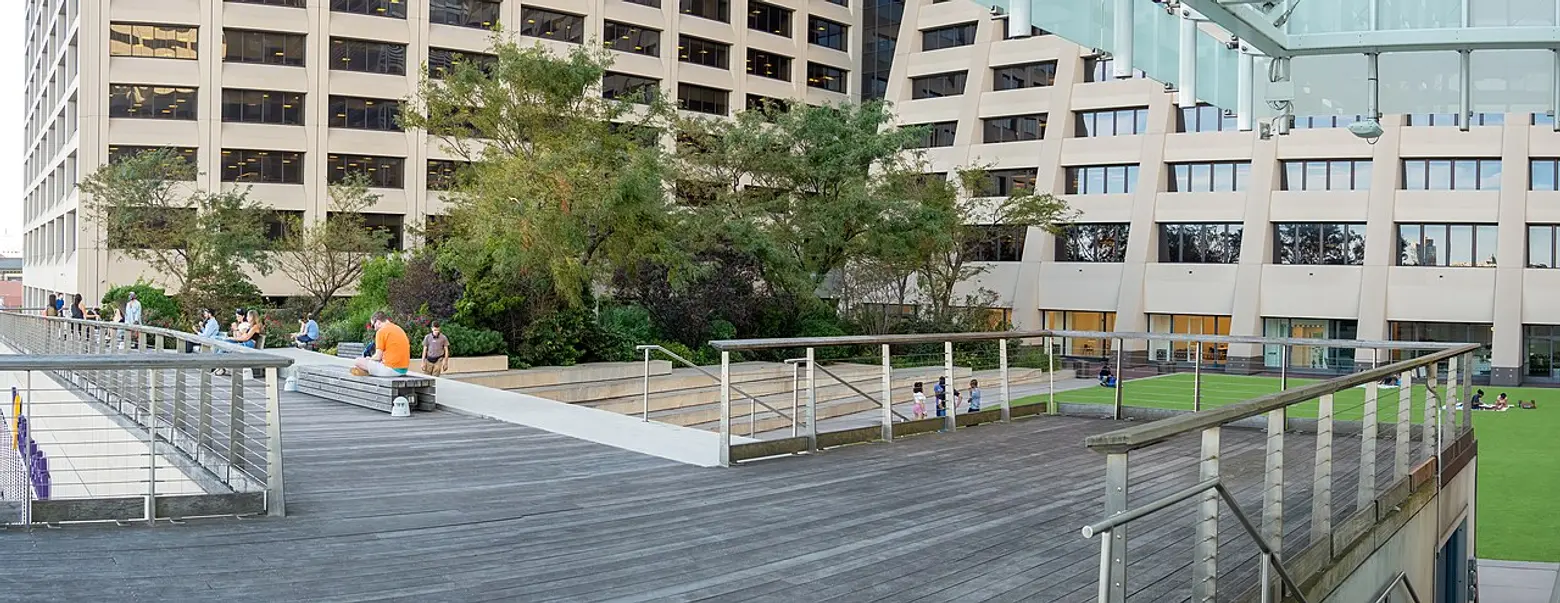 Photo credit: Wikimedia cc
Photo credit: Wikimedia cc
Elevated Acre
This “secret” elevated plaza is discreetly tucked away between two office buildings at 55 Water Street. While the public plaza was completed in the 1970s, the current design was completed in 2005 by Marvel architects. The hidden meadow features gardens elevated high above the bustling streets of FiDi. There’s also an amphitheater, beer garden, and sweeping views of the East River. The plaza can be reserved to host private events and programs, or simply be used as a peaceful lunch break spot.
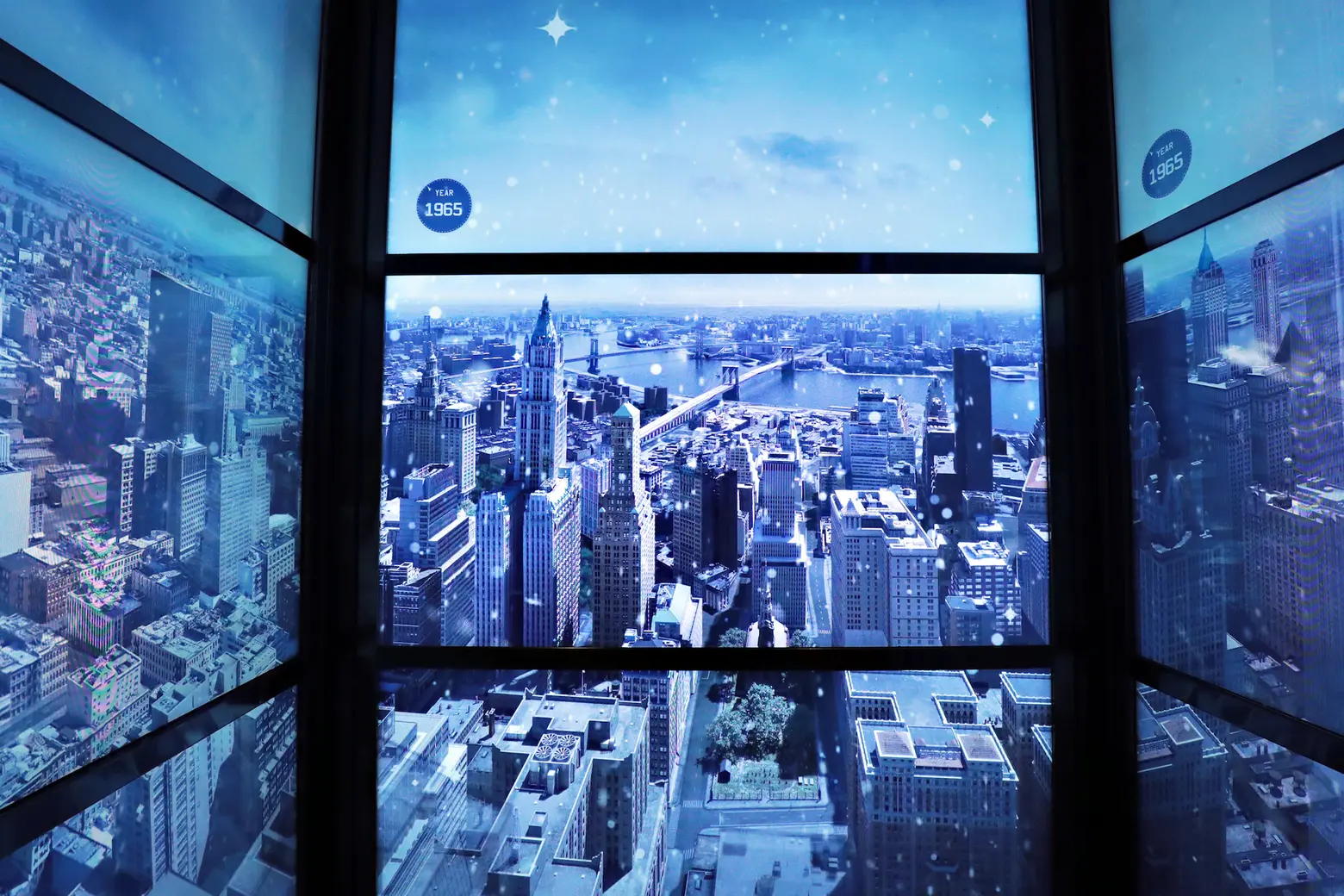 Photo credit: Cindy Ord/Getty Images for One World Observatory
Photo credit: Cindy Ord/Getty Images for One World Observatory
Notable neighborhood highlights
One World Observatory at One World Trade Center
Twenty years after the terrorist attacks of September 11, the rebuilding of Lower Manhattan’s World Trade Center complex is nearly complete. The now-iconic One World Trade (formerly known as Freedom Tower) anchors the seven-building complex. At its apex, the observatory takes up the 100th, 101st, and 102nd floors, with the main viewing space situated on the 100th floor. In addition to sweeping vistas, visitors get a 47-second, 23 mph elevator ride to the top featuring a 515-year time-lapse view of the NYC skyline. There’s also a restaurant on the 101st floor and an event space on the 102nd floor.
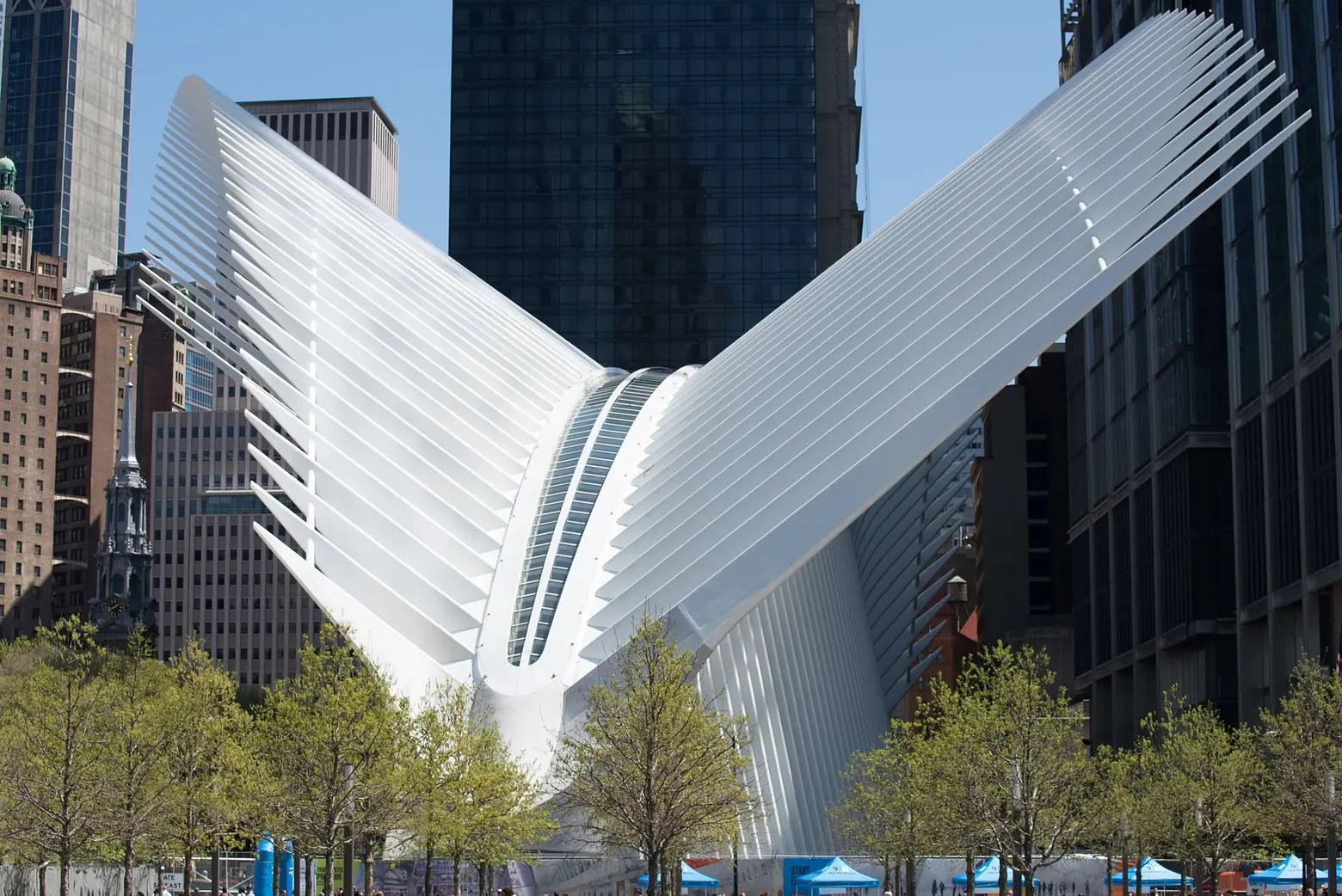 Photo credit: Wikimedia cc
Photo credit: Wikimedia cc
The Oculus at the World Trade Center
As part of architect Daniel Libeskind’s master plan for rebuilding the World Trade Center, this head-turning structure, designed by Santiago Calatrava with a central skylight that washes the Oculus floor with a beam of light, acts as a poignant reminder of the attacks of September 11, 2001. Home to 12 subway lines, the World Trade Center PATH station, and over a dozen retail shops, the structure now serves over a million people a week. In addition to shoppers, commuters, and visitors, the space hosts weekly events from farmers’ markets and art exhibits to musical performances and retail events.
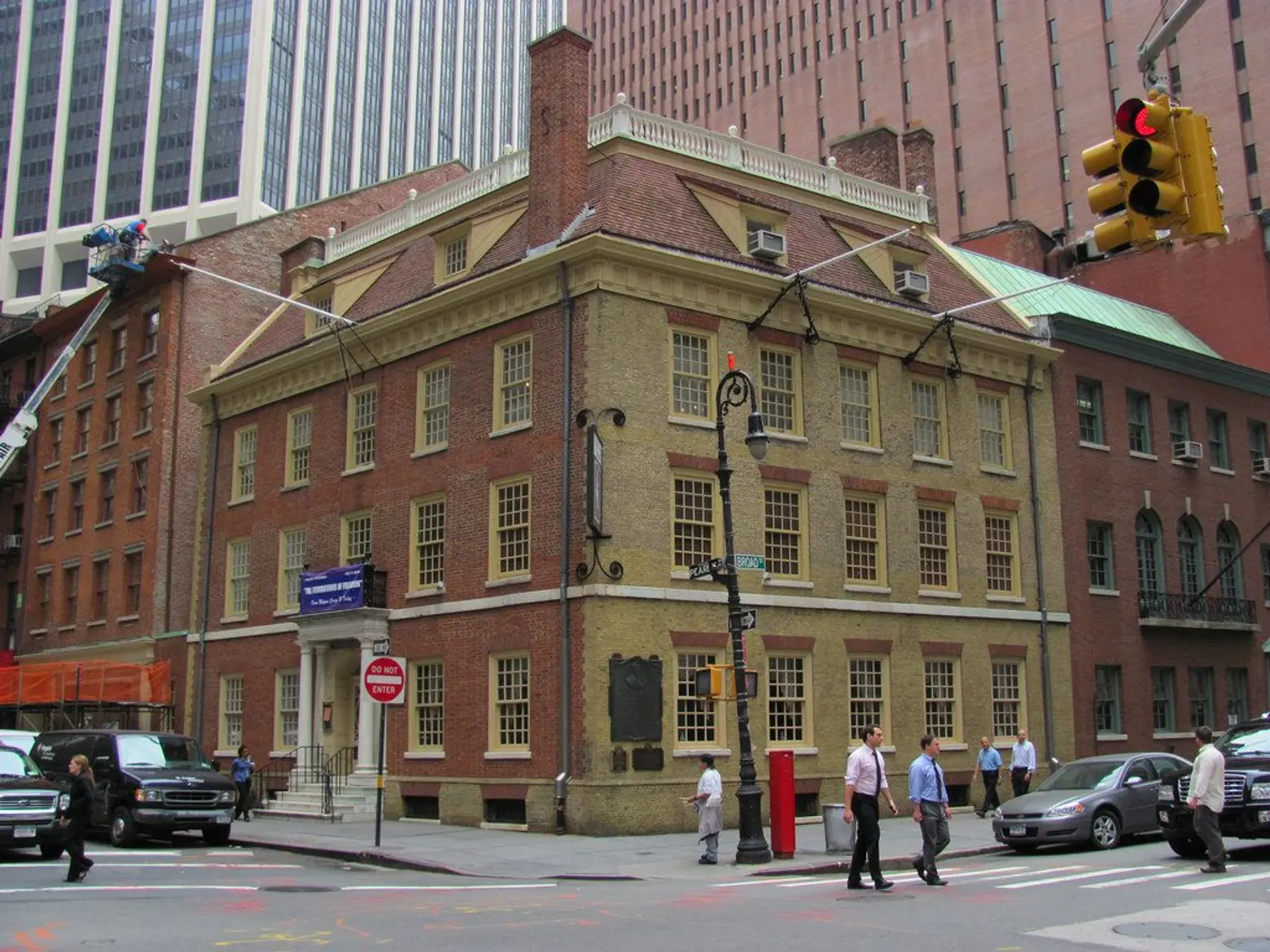 Photo credit: Jim.henderson via Wikimedia
Photo credit: Jim.henderson via Wikimedia
Fraunces Tavern
Located at 54 Pearl Street, Fraunces Tavern has the distinction of being New York City’s oldest bar. First opened in 1762, the bar boasts having served George Washington, hosted peace negotiations, and run a speakeasy during Prohibition. Since 1904, the New York Sons of the Revolution has owned and operated the Fraunces Tavern as a museum and restaurant. They restored the building, which had a prominent place in American Revolution history. The organization claims the tavern is also Manhattan’s oldest surviving building. The Fraunces Tavern Museum maintains several galleries of art and artifacts about the Revolution.
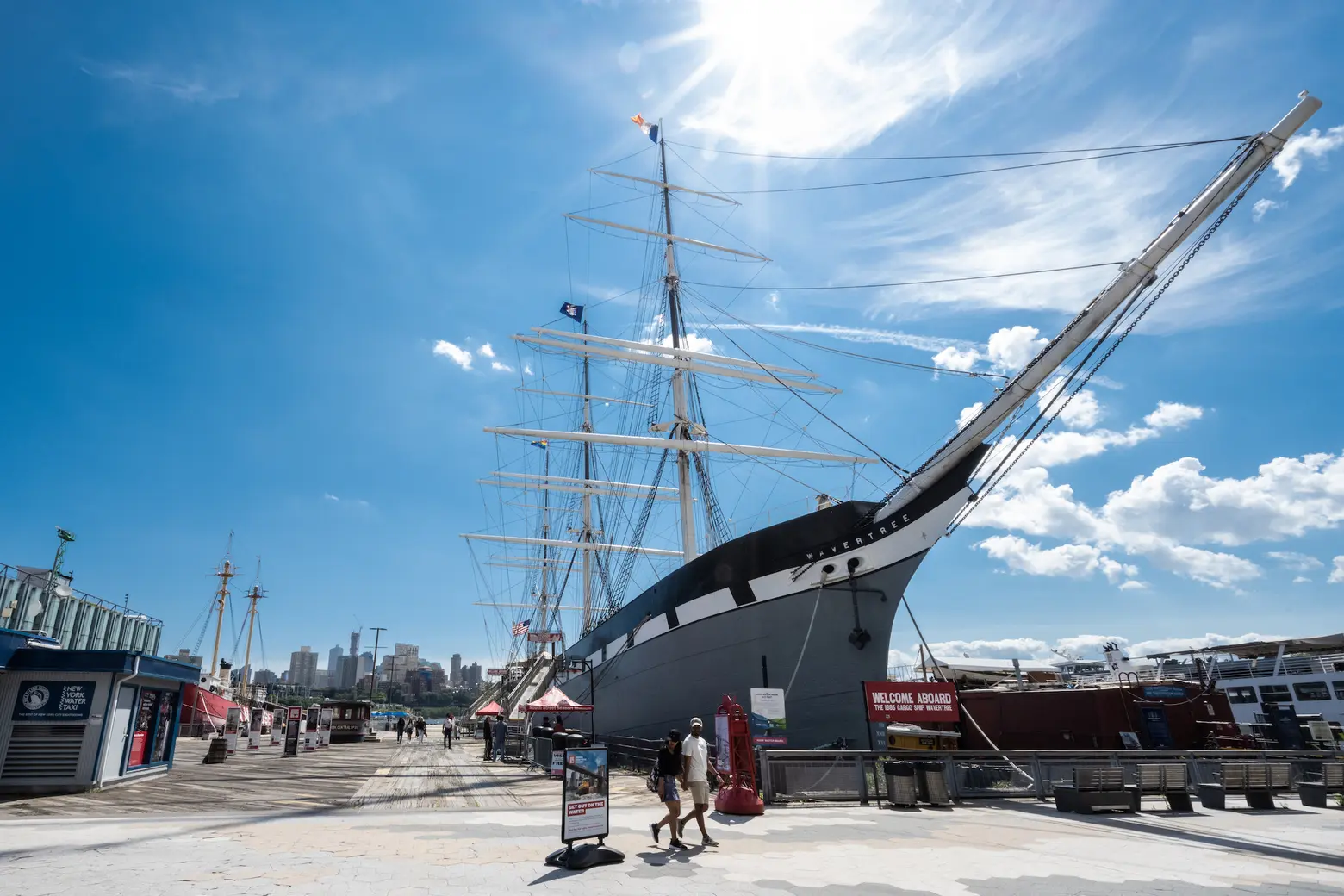 Photo credit: Richard Bowditch
Photo credit: Richard Bowditch
South Street Seaport Museum
At this maritime museum and neighborhood cultural hub, visitors can view and learn about art and artifacts related to New York City’s history as a major international port. The Museum keeps the city’s maritime history alive with a collection of over 28,000 works of art and artifacts, exhibition galleries, education spaces, working nineteenth century print shops, and an active fleet of historic vessels. There are also one-of-a-kind experiences like the opportunity to sail New York’s harbors on an authentic 1885 schooner from May to October.
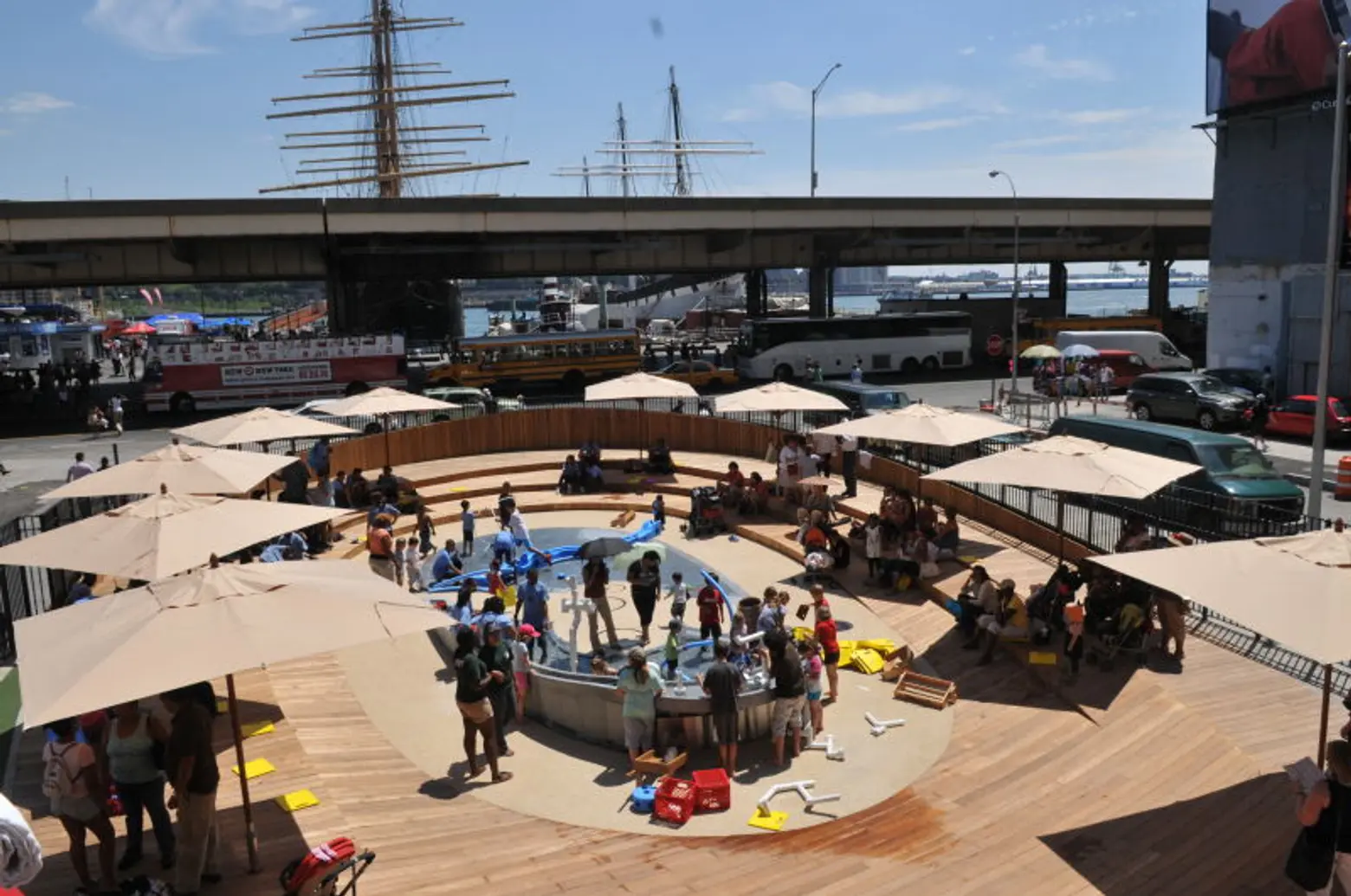 Photo credit: Wikimedia cc
Photo credit: Wikimedia cc
Imagination Playground at Burling Slip
Designed by architect David Rockwell, this interactive space prompts children to discover their environment and create a play space of their own with sand, water, and movable parts. With giant foam blocks, mats, wagons, fabric, and crates, kids can build and explore endless possibilities.
Where to live
With its unparalleled skyline views and the convenience of major subways and a ferry nearby, the Financial District has evolved into a first-rate residential neighborhood. Living options are many and growing, among some of the city’s most noteworthy new towers and treasured historic buildings converted into luxury residences.
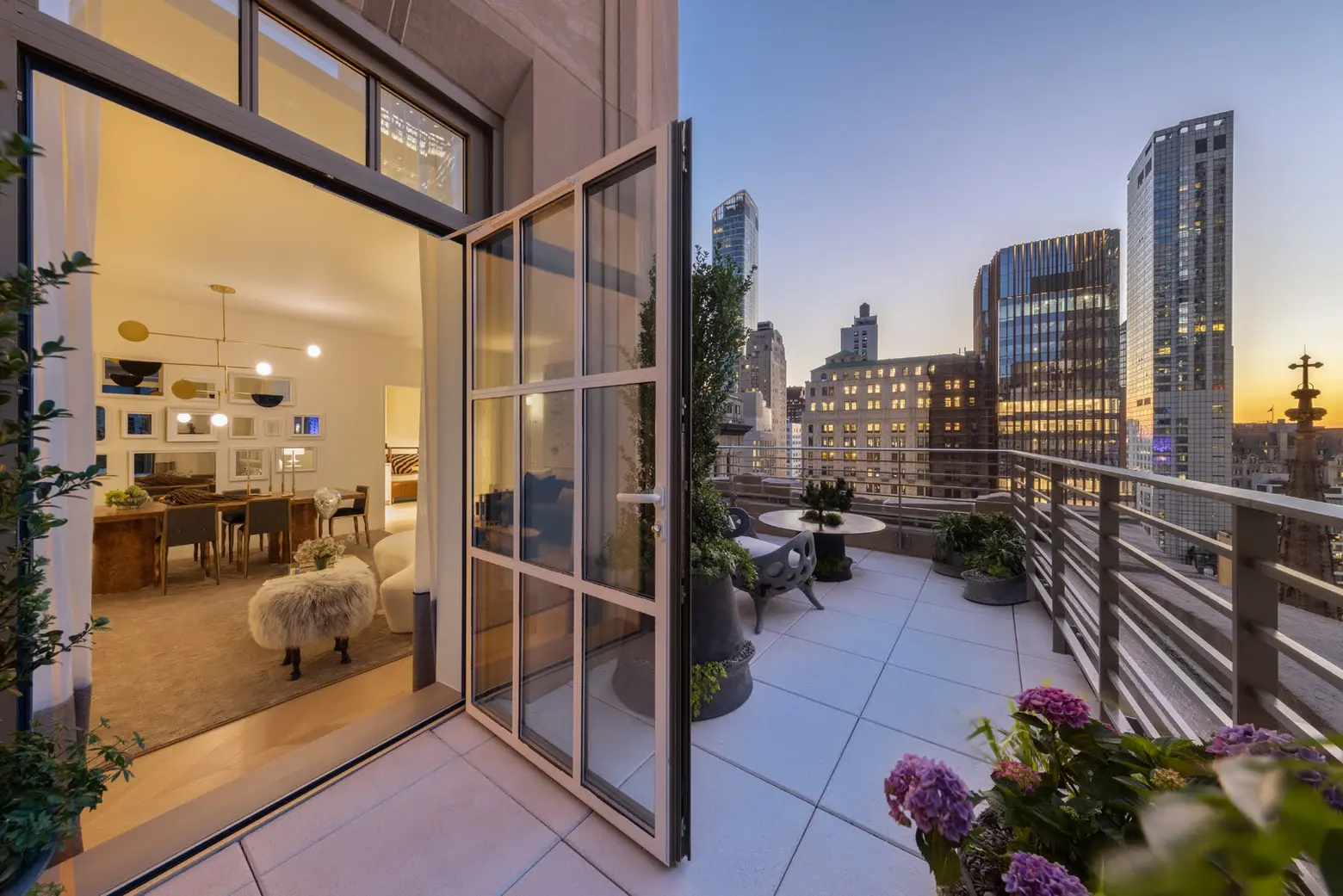
Photo credit: Evan Joseph for Macklowe Properties
One Wall Street
A New York City Art Deco landmark is showing off its second act as a luxury residential tower. Once one of New York’s tallest office buildings, One Wall Street is now the largest office-to-residential conversion in NYC history. Developed by Macklowe Properties, the 566-unit tower occupies the restored former Irving Trust Company Building, designed in 1931 by famed architect Ralph Walker.
The building contains a range of studios to four-bedroom homes and one penthouse. Macklowe Properties and Robert A.M. Stern Architects/SLCE preserved and restored the building’s iconic limestone and the “Red Room,” a former banking hall that features a floor-to-ceiling mosaic.
Built for today’s flexible and mobile workforce, the building features a huge co-working space designed by Deborah Berke Partners. Additional amenities include a four-story fitness center, a 75-foot indoor lap pool on the 38th floor overlooking New York Harbor, a full-floor event lounge, and a landscaped terrace. A two-level Whole Foods grocery store will occupy the ground floor. Current availabilities at the building start at $1,130,00 for a studio and go up to $10,500,00 for a three-bedroom home.
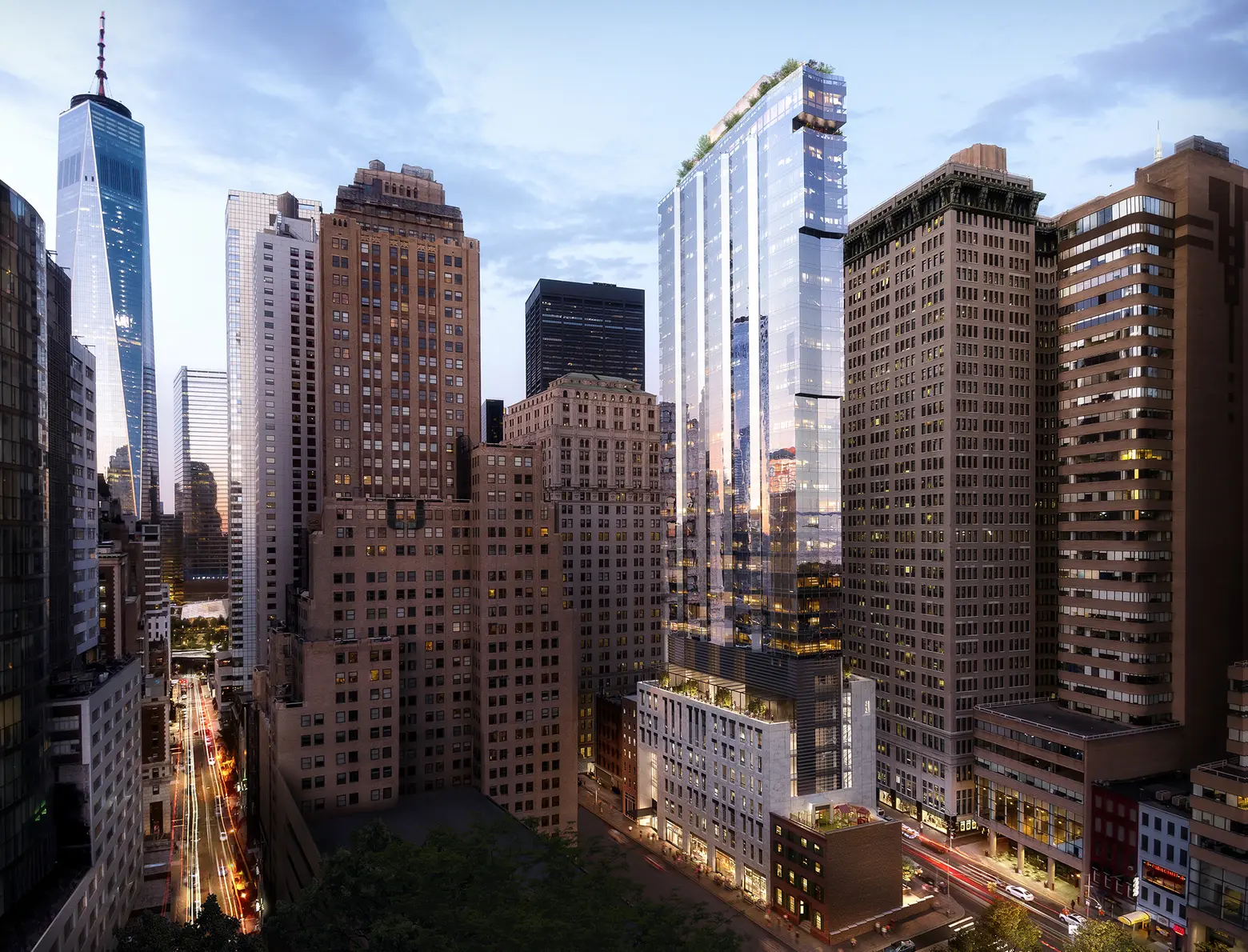 Rendering courtesy of Binyan Studios
Rendering courtesy of Binyan Studios
Jolie
Trinity Place Holding’s new condominium tower at 77 Greenwich Street, designed by FXCollaborative is a 500-foot-high, 42-story high-rise that contains 90 residential units. The residences begin on the 15th floor and feature sprawling river views and interiors designed by Deborah Berke Partners, known for their work at 432 Park Avenue.
An impressive suite of amenities was also designed by Deborah Berke Partners and includes a penthouse-level club, a private dining room with a catering kitchen, a children’s playroom, and a double-height fitness center programmed by celebrity personal trainer Jay Wright. The building’s outdoor spaces were designed by Brooklyn-based Future Green Studio, and include a 3,600-square-foot rooftop garden, a Japanese rock garden, and a 2,350-square-foot lower floor terrace featuring pergolas and a dog run.
One of the most exciting aspects of the slender tower may be the unique public elementary school that is being created at its base. The neighboring Robert & Anne Dickey House, a historic landmark built in 1810, has been preserved and restored as one of the last remaining Federal-style buildings in New York City, and seamlessly integrated into the building.
Available units range from a one-bedroom condo asking $1,575,000 to the four-bedroom #36A, asking $5,500,000.
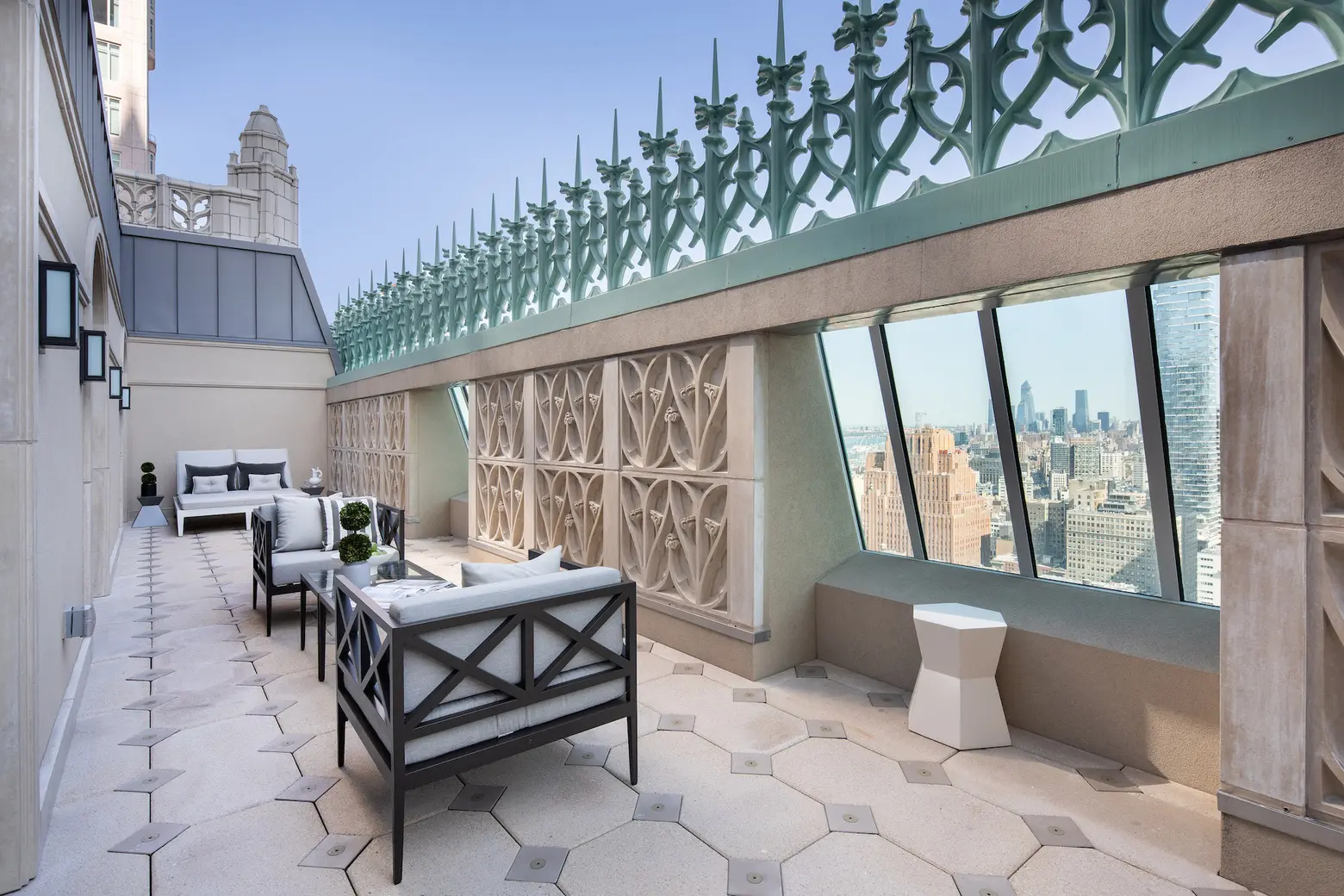 Photo by Travis Mark
Photo by Travis Mark
The Woolworth Tower Residences at 2 Park Place
The Woolworth Tower Residences are loft-like condominium homes at the top of the landmark Woolworth Building. Spacious apartments offer luxurious bespoke features, some with setback terraces that remain an integral part of the historic building’s famous terra-cotta exterior. Dazzling city views from all sides are just as iconic as the building itself.
The building’s historic grandeur starts with the lobby, beneath the coffered ceiling originally located in Frank Woolworth’s office. Amenities include a 50-foot lap pool–once Frank Woolworth’s private pool–featuring a sauna, hot tub, and Italian mosaics, a lounge, on-site parking, a fitness center, and a wine cellar and tasting room. The building offers a full-time concierge and a 24-hour doorman.
Recent sales included a four-bedroom duplex that was featured in the season three premiere of HBO’s “Succession” as Kendall Roy’s (Jeremy Strong) ex-wife’s (Natalie Gold) pad. The 6,711-square-foot duplex with 2,770 square feet of exterior space sold for $19,500,000.
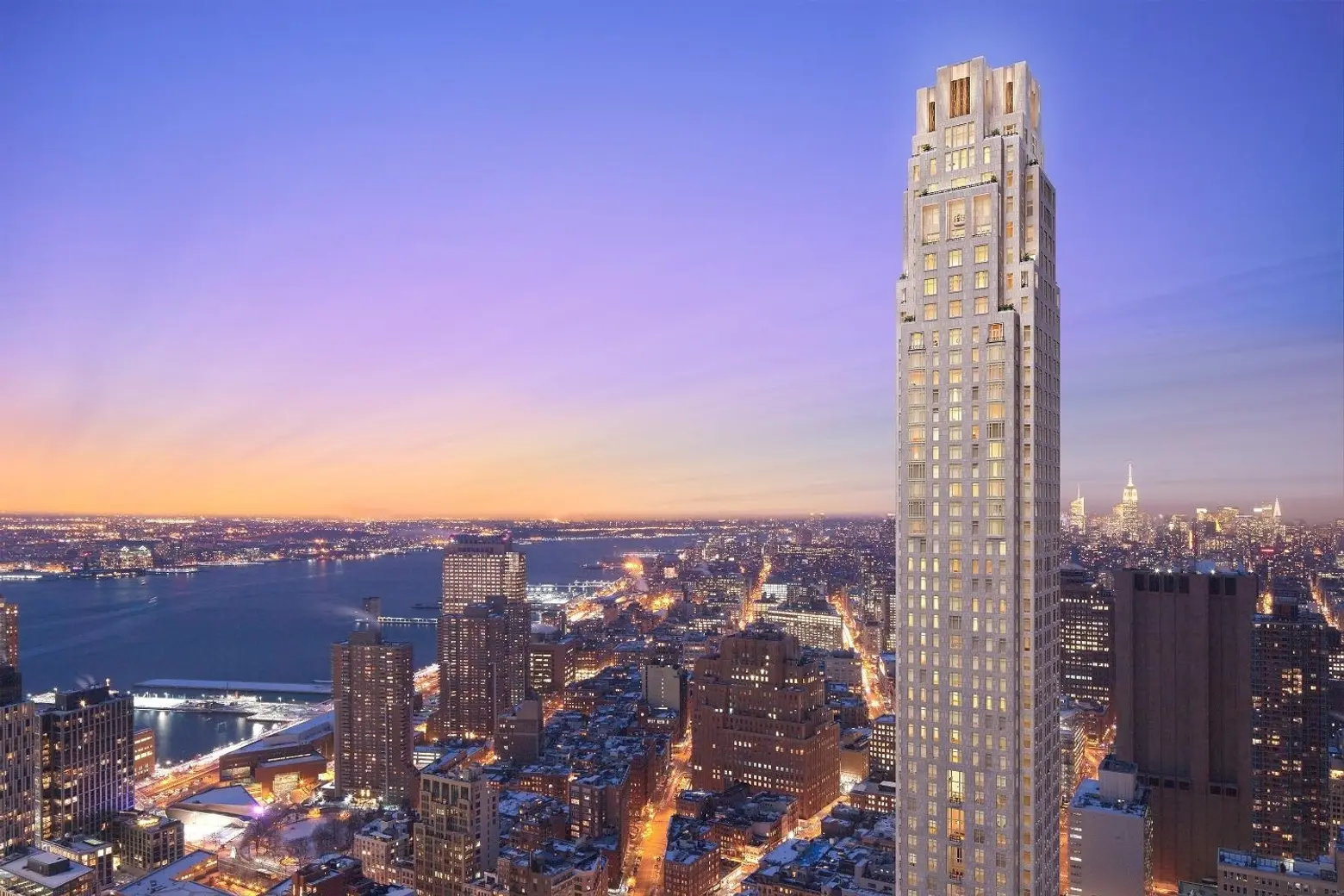
Image credit: The Corcoran Group
The Four Seasons Private Residences, 30 Park Place
Another newly-minted icon with the Robert A.M. Stern signature, the 926-foot, 67-story mixed-use tower at 30 Park Place is not only downtown Manhattan’s tallest condominium tower, but it’s also among its most luxurious. At the crossroads of the Financial District and Tribeca, the residence boasts a peerless amenity suite that includes the rare perk of full service from the Four Seasons Hotel located on its lower floors. Apartments include full-floor penthouses–some as large as 6,500 square feet–and setback terraces. Opulent interiors reflect Gilded Age luxury and spectacular views coupled with state-of-the-art “smart home” systems. Residential amenities include a 75-foot heated pool, a gym and fitness center, a yoga studio, a private dining room, a conservatory and lounge with access to loggias, a Roto-designed children’s playroom, a screening room, a landscaped public plaza, and an attended parking garage.
Current availabilities range from a studio for $1.2 million all the way up to four-bedroom PH 81, asking $45 million.
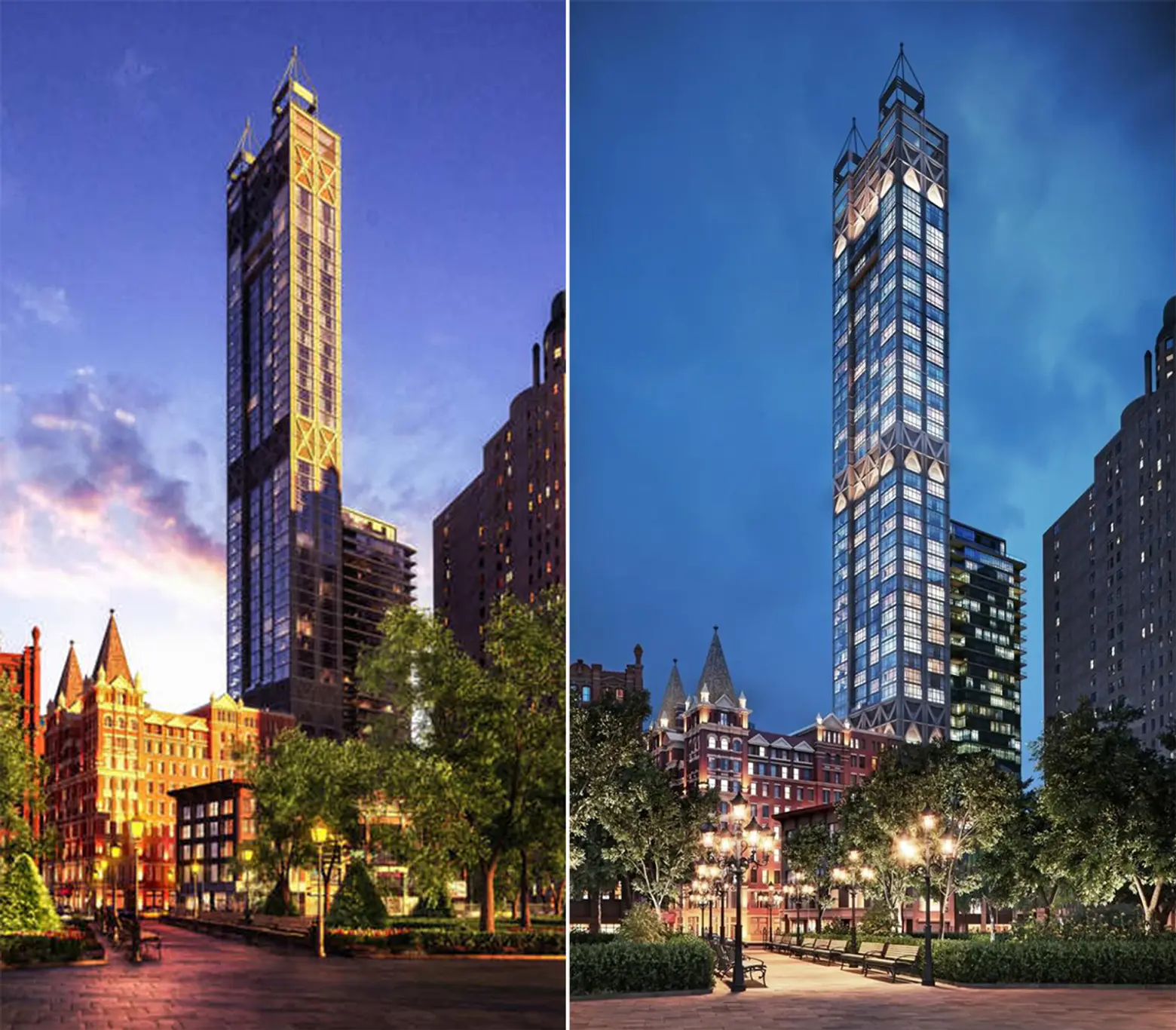 Rendering courtesy of Gerner Kronick + Valcarcel Architects (GKV)
Rendering courtesy of Gerner Kronick + Valcarcel Architects (GKV)
The Beekman Residences
The 68 condominiums that comprise a newly-constructed 51-story tower at 115 Nassau Street stand adjacent to the historic Temple Court, a 10-story 1881 building at 5 Beekman Street. This terra cotta neighbor, home to a 287-room luxury hotel, boasts one of the most beautiful atriums in the city.
The condos within the tower residences include one- to three-bedroom units and palatial penthouses with 360-degree downtown views. Residents have access to the services of the neighboring hotel as well as a private dining room, a media room, a rooftop terrace, and a fitness center.
Current available apartments range from a one-bedroom unit for $1,375,000 to a three-bedroom unit for $3,895,000.
RELATED:
- An art lover’s guide to NYC: The best public art installations and museums in FiDi
- Dawn of a new Downtown: The transformation of Lower Manhattan since 9/11
- New looks for the performing arts space coming to the World Trade Center
- See inside One Wall Street, the largest office-to-residential conversion in NYC
